One Day in Palermo – A Free Walking Tour Itinerary
Discover Palermo’s UNESCO churches and vibrant street food on a one day visit to this historic Mediterranean city. On our detailed walking tour through the ancient city visit ornate, Arab-Norman churches, bustling food markets and more in the capital city of Sicily.
Table of Contents

One Day in Palermo Itinerary
This one-day itinerary hits all the Palermo must-sees. The perfect itinerary for cruise passengers.
- Enjoy our self-guided Palermo Walking Tour of the ancient city beginning at the impressive Massimo Theatre .
- Explore the unique intersection Quattro Canti .
- Visit the Palermo Cathedral and the Church of San Cataldo , two of Palermo’s UNESCO-protected Arab-Norman churches.
- Don’t miss the Ballaro Market , the city’s oldest and most authentic outdoor market.
- Visit the Regional Art Gallery of Sicily or any of Palermo’s museums .
- In the evening, enjoy a walk on the Palermo waterfront or take in the city’s nightlife in the bustling Vucciria Market .
On a 2nd day in Palermo, visit anything missed on Day 1 OR visit the city’s markets more fully.
Palermo Walking Map

What to See in Palermo
The bulk of the things to see in Palermo are located in the old section of this 2700 year old city. Our walking tour covers this city’s UNESCO churches , food markets and museums .
Palermo: A brief history
The city was founded in the 8th century BCE. Over the centuries the city has become a mix of cultural styles and religions. A number of different architectural styles can be seen in the palaces, monasteries and churches of the city. The city first developed around the intersection of Via Maqueda and Corso Vittorio Emanuele, known as Quattro Canti. This part of the city is often a maze of winding, narrow streets. The city’s 19 th -century expansion to the north has wider, straighter streets with larger buildings. WWII bombing damaged or destroyed much of the city but slowly the beauty of the city is re-emerging.

UNESCO Churches of Palermo
The UNESCO World Heritage Site is officially called the ‘ Arab-Norman Palermo and the Cathedral Churches of Cefalú and Monreale’ and includes a collection of structures built or renovated during the 12 th century. The Normans had conquered Sicily and their kings made the city of Palermo their Sicilian seat of power. Seven buildings in Palermo are part of this World Heritage Site. All are worth a visit. Our walk passes these five:
- Palermo Cathedral ,
- Church of Saint John of the Hermits ,
- Norman Palace with its popular Palatine Chapel ,
- Church of San Cataldo , and
- Church of St. Mary of the Admiral .

Street Food Culture – The Markets of Palermo
The ancient city was home to four open-air street markets. Three of these markets still flourish today and are well worth visiting:
- Capo Market – the local’s produce and meat market,
- Vucciria Market – the spot for nightlife, and
- Ballaro Market – the oldest and most authentic market.
These markets made Palermo famous for its street food culture . Discover bakeries, pizzerias and street food stands that sell an amazing variety of foods.
Try Palermo’s most famous street food, Sfincione . Also known as Sicilian pizza, it has a focaccia-like crust that is typically topped with tomato sauce, oregano and onions.

Palermo Museums
There are five unique museums in Palermo:
- Antonio Salinas Regional Archeological Museum – archeological treasures of Sicily
- Sant’Anna Modern Art Gallery – art of the 19 th and 20 th centuries
- Regional Art Gallery of Sicily – art from the Middle Ages to the 18 th century
- Inquisition Museum – prison cells, graffiti and history of Inquisition
- Antonio Pasqualino International Puppet Museum – Sicilian puppetry
Self-Guided Palermo Walking Tour
The best way to explore the historic district of Palermo is on foot. This 5-kilometre walking route takes about 1.5 hours to walk without entering any of the buildings. Depending on the time spent at each stop, this walk could easily take a day. Follow our route from Massimo Theatre to the Church of San Cataldo in Piazza Bellini to catch the city’s must-sees, if you are short on time.

Our walking tour begins on the informal northern boundary of the ancient city in Piazza Giuseppe Verdi (Via Maqueda and Via Volturno). We start at the Teatro Massimo.
Massimo Theatre
Palermo’s grandest theatre, known for its perfect acoustics, was completed in 1897. Opera, ballet and musical concerts are staged throughout the year in its ornate auditorium, which seats over 1000 people. Golden stuccoes and decoration, red velvet and glittering chandeliers add sumptuous elegance. Guided tours are available every day.

In this part of the city, the street Via Maqueda separates the city quarters of Capo and Vucciria. Both quarters have open-air markets, but if you are ready for a snack or looking for some fresh produce to enjoy while you explore, walk west along Via Volturno to the busy Capo Market (Mercato del Capo). This is where the locals shop for fruit, vegetables, meats and local specialties. Vucciria Market, further along this walk, is a great place to grab lunch or enjoy Palermo’s nightlife.
Walk east across Via Maqueda on Via Bara All’Olivella to Piazza Olivella (about 150 metres) into the city’s Vucciria quarter . The Museo Archeologico Regionale Antonino Salinas is on the far corner on the right.
Antonio Salinas Regional Archeological Museum
This museum, in a former monastery, holds some of Italy’s most valuable archaeological treasures, illuminating Sicily’s Greek and Roman past. See Greek and Roman sarcophagi and votive urns, sculptures, statues and more. The highlight is the Palermo Stone, an ancient Egyptian artifact inscribed with a partial list of the kings of Egypt. Take a moment to enjoy the quiet inner courtyard.

Continue east on Via Bara All’Olivella to Via Roma, a popular shopping street. Turn right and walk to Piazza San Domenico , on the left. The Column of the Immaculate Conception stands in the centre of the square. Look up to the bronze statue of the Madonna at the top. Statues of the four archangels are on pedestals around the base. Chiesa di San Domenico is the beautiful twin-towered church behind it.
Church of Saint Domenico
The front of this church was completed in the Baroque style with two bell towers. Niches contain statues of Dominican saints and popes. Many precious works of art are displayed inside the church.

In the 13 th century, a Dominican church was built on this site with a convent and cloister adjacent. The community outgrew the first church and also a second one built in the 15 th century. The current church was completed in the 18 th century.
Walk across the Piazza San Domenico and south on Via Maccherronai. This entire street is Mercato della Vucciria.
Vucciria Market
If it is time for some food, this is the place to enjoy it.
This popular market is a loud, somewhat chaotic, place stretching between Piazza San Domenico and Piazza Caracciolo. The market was originally a meat market but these days everything from meat, fish, vegetables, full meals to souvenirs is on offer.
When the food stalls close for the day (typically around 2 pm), bars and restaurants continue to fill the market with food options and happy people until the wee hours. No matter when you arrive, there is always something to experience.

From Piazza Caracciolo, at the south end of the market, continue for one block on Via Pannieri to Corso Vittorio Emanuele. Turn right and walk for 250 metres to Via Maqueda and the intersection known as Piazza Vigliena or Quattro Canti.
Quattro Canti
This is the historic heart of the old city. The intersection has 8 equal sides; 4 contain streets and the balance contain building fronts. Each building façade has a fountain at ground level with statues in niches above. If you can, visit this intersection at different times during the day. As the sun moves through the sky, each building is sunlit, giving the intersection the nickname Theatre of the Sun (Il Teatro del Sole).
Continue on Corso Vittorio Emanuele for about 500 metres. The Cattedrale di Palermo sits to the right across a beautiful, green courtyard.

Palermo Cathedral
The 12 th -century cathedral impresses with its unique Arab-Norman architectural style, still visible after many reconstructions over the centuries. Admire its façade, Neoclassical dome, and once inside, the sets of Moorish arches.
Below the sanctuary, see the royal Norman tombs and crypts containing sarcophagi dating back to the Roman era. The treasury with Constance of Aragon’s gem-encrusted, 13 th -century crown is also a highlight. Climb to the roof terrace for great city views.

Continue on Corso Vittorio Emanuele. The area to the left is the Albergheria quarter. This district once housed the Norman King’s officials and advisers. Like most of the city, it was damaged by WWII bombing. Today its buildings house many of Sicily’s Regional government offices.
After a short walk, the beautiful Villa Bonanno park, in Piazza della Vittoria, is on the left. Walk through it to the UNESCO-recognized Palazzo dei Normanni and Cappella Palatina.
Norman Palace and Palatine Chapel
The palace was built in the 9 th century. When the Normans took control of the city in the 12 th century, it became the seat of the Norman kings. Today, it is the seat of the Sicilian Regional Assembly.
The Normans added gold-highlighted Byzantine mosaics to the Royal Apartments and the Palatine Chapel. The chapel is a masterpiece with Arabian arches, inlaid marble floors, and a wooden ‘muqarnas’ ceiling demonstrating the marriage of cultures under Norman rule.
Next door is the Chiesa di San Giovanni degli Eremiti, another of Palermo’s UNESCO churches.
Church of Saint John of the Hermits
This 12 th -century, Arab-Norman church was built atop a mosque which was built on the site of a 6 th -century Benedictine chapel. Five, red domes cap the church. The church is surrounded by a lush garden of citrus trees and exotic plants and includes the ruins of the cloister.
Walk northeast on Via Antonio Mongitore. The street ends at Piazza F Baronio Manfredi. Turn right and then immediately left to stay on Piazza F Baronio Manfredi. Continue straight onto Via Tesauro Francesco Paolo. The street ends at Via Ballaro and Mercato di Ballaro.
Ballaro Market
The always-bustling market stretches along most of the pedestrian-only Via Ballaro. This is the oldest and most authentic of the city’s street markets. Enjoy bargaining for fresh produce, cheese, olives, and seafood just like the locals. Don’t miss street food like chickpea fritters and marzipan fruits. In the evening, restaurants spill onto the streets. Any time of day, it is a mix of noises, smells and street life.

Via Casa Professa begins at the northwest end of Via Ballaro. Turn right and walk to Chiesa del Gesù (about 150 metres).
Church of the Jesus
This was our favourite church in Palermo. See twisted columns, sculpted angels, and marble draperies. It seems like frescos adorn every flat surface. We almost walked past this church, but were so glad we went inside.
The stunning Baroque church, also known as Casa Professa, was built during the 17 th century. Over the next century, its predominantly marble, interior décor was completed.

Via Casa Professa becomes Via del Ponticello to the northeast of the church. Walk to Via Maqueda. Turn left and walk about 80 metres. On the right is Piazza Bellini and Chiesa di San Cataldo, the second last UNESCO-protected church on our tour.
Church of San Cataldo
The red domes and square, blocky shape of this 12 th -century church are a simple yet striking blend of Arab and Norman architecture. The interior is stark with its bare, stone walls and little decoration.

The UNESCO-recognized Chiesa di Santa Maria dell’Ammiraglio is next door to San Cataldo Church.
Church of St. Mary of the Admiral
The rather unique name of this church honours the Grand Admiral of the Kingdom who ordered its construction in the 12 th century. Later the church was added to the nearby monastery of Martorana and is now often referred to simply as La Martorana.
The church floor plan is typical of Byzantine churches where the congregation faced the east to pray. Although many of the Byzantine mosaics have disappeared, the upper part of the walls and the dome are still covered with mosaics, thought to be the oldest in Sicily.

Across the Piazza Bellini is the Chiesa e Monastero di Santa Caterina d’Alessandria.
Church and Monastery of Saint Catherine of Alexandria
A Dominican monastery began here in the 14 th century. The current church was added in the 16 th century by purchasing and expanding a nearby church building. Both the monastery and the church suffered considerable bomb damage during World War II. The monastery welcomed cloistered nuns until 2014.
In 2017, the property opened as a museum of sacred art . A sweet shop sells desserts from monasteries in Palermo reproduced according to ancient recipes. Visit the terraces for a bird’s eye view of the area.
Don’t miss the Pretoria Fountain in the centre of Piazza Pretoria which is just a short walk along the west wall of the church. The intricate fountain is known for its sculptures of naked nymphs. In the 16 th -century, the city’s church-goers called it the Fountain of Shame. The building on the left, Pretorio Palace, houses Palermo City Hall .

For another look at Quattro Canti’s Theatre of the Sun, continue through Pretoria Square to Via Maqueda, turn right and the intersection is straight ahead.
Otherwise, from Piazza Bellini walk east on Discesa dei Giudici, across Via Roma and continue on Via Sant’Anna for 300 metres.
This is the Kalsa quarter which was left untouched for decades after World War II’s destructive bombings. The area finally received some love and attention. Art galleries, restored churches and palaces , and other tourist attractions are now open in Kalsa.
The Galleria d’Arte Moderna is in the convent of the Church of Sant’Anna, on the left.
Sant’Anna Modern Art Gallery
The gallery exhibits both paintings and sculptures showing the evolution of Italian art in the 19th and the 20th centuries. The huge building includes exhibition spaces, a bookshop, cafeteria/restaurant and more.
The building was built in the 15 th century. It became the Modern Art Gallery’s home in 2006.

Walk east on Via Sant’Anna, continuing along Piazza Croce dei Vespri, Piazza Aragona and Via Alloro, a distance of about 500 metres to Galleria Regionale di Sicilia.
Regional Art Gallery of Sicily
The 15th-century, Gothic-Catalan, Palazzo Abatellis houses one of Palermo’s top art museums. Originally the home of an important city official, it became a monastery after his death.
The gallery displays artwork by Sicilian artists from the Middle Ages to the 18th century. Treasures include Antonello da Messina’s dramatic Annunciata , painted in 1473, and the fresco Triumph of Death , painted in the mid-15 th century.
Walk back on Via Alloro to Via del Quattro Aprile, turn right and walk to Piazza Marina and the Palazzo Chiaramonte Steri (on the right). It’s about 120 metres.
Inquisition Museum
The museum is on the lower floors of the 14th-century palace, Palazzo Chiaramonte-Steri. From 1600 to 1782, it held the tribunal of the Holy Inquisition and its prison.
Wander through restored jail cells and see the graffiti artwork of inquisition prisoners. Learn about the fates of accused heretics, jailed here by the thousands.
Continue on Piazza Marina and edge to the right onto Salita della Intendenza. The 2 nd lane on the right is Piazza Antonio Pasqualino. The Museo Internazionale delle Marionette Antonio Pasqualino is about 60 metres down the lane on the right.

Antonio Pasqualino International Puppet Museum
Sicily’s traditional puppet theatre, which began in the 18 th century, thrives at this delightful, unique museum. It is a combination of museum and stage for live theatrical shows. Whimsical puppets with elaborate costumes enact tales of life from long ago. Exhibits show the wooden puppets’ mechanics, costumes and scripts.
Return to Salita della Intendenza and cross the boulevard to Piazza Marina. Giardino Garibaldi is straight ahead. The only entrance is on the northwest corner. Follow the Piazza to the right then turn left and walk to the corner.

Garibaldi Garden and the Palermo Waterfront
Opened in 1863, these lush gardens honour national hero, Giuseppe Garibaldi, who played a role in the unification of Italy. Stroll beside palm trees and statues of illustrious Italians. The stars of the garden are the huge ficus trees , some of the largest in Italy.
In the evening, enjoy the waterfront . Sip a drink at a bar on the nearby esplanade. Watch the port’s twinkling lights. Join the locals for an evening passeggiata along the waterfront promenade of Foro Italico Umberto I . There are lots of options.
The easiest way to reach the waterfront is by walking east on nearby Via Vittorio Emanuele and through the former city gate, Porta Felice . Built in the late 16 th century, these imposing, Renaissance-and-Baroque-style gates, marked the water entrance to ancient Palermo.

Know Before You Go – Visiting Palermo
Can i drive in the old city of palermo where can i park in palermo.
Driving within the historic city is not recommended. It’s a busy area. The number of pedestrians in the area makes driving an uneasy and stressful event. There is limited parking in these areas and in most cases, you’ll need a special pass to park there.
We recommend parking your vehicle outside of the historic area. We parked our vehicle to the north, in the Politeama – Libertà neighbourhood.
When trying to park your vehicle, note the colour of street parking lines.
- White lines are FREE.
- Blue lines are pay. Depending on the area, you can pay for your parking by: using an online application, using a street machine, or purchasing a ticket from the local tobacco shops.
Is Palermo a walkable city?
Yes, Palermo is definitely walkable. All of the major sites in Palermo (the markets, churches and museums) are concentrated in the historic district. We covered our 5-km walking route in one full day.
Sicily Road Trip
Palermo is just one great destination on a Sicily road trip. Be sure to check out our article, 7-14 Day Sicily Self-Driving Tour , for even more places to visit.

Interested in more Itineraries? Sign up here.
(No spam. Just great travel tips.)

Valerie Vanr
Valerie is the Co-founder of AvrexTravel.com. Val enjoys travel photography and writing informative City Walking tours.

One Day in Palermo – Itinerary, Map, Tips & Guide
This post may contain affiliate links, from which we earn an income.
How to Spend One Day in Palermo
A complex city, caught between West and East for millennia, Palermo is a deliciously intense experience. Full of dazzling buildings, hidden corners, and chaotic markets, the Palermo tourism experience is striking – even one day in Palermo will leave you with strong impressions and memories.
In this Palermo travel guide, you’ll find a complete itinerary of all the most important must see Palermo attractions, with an interactive map, organised to make the best use of your time.
We also share recommendations for central places to stay, ideas about where to eat local food, and tips about how to make the most of your 24 hours in Palermo.
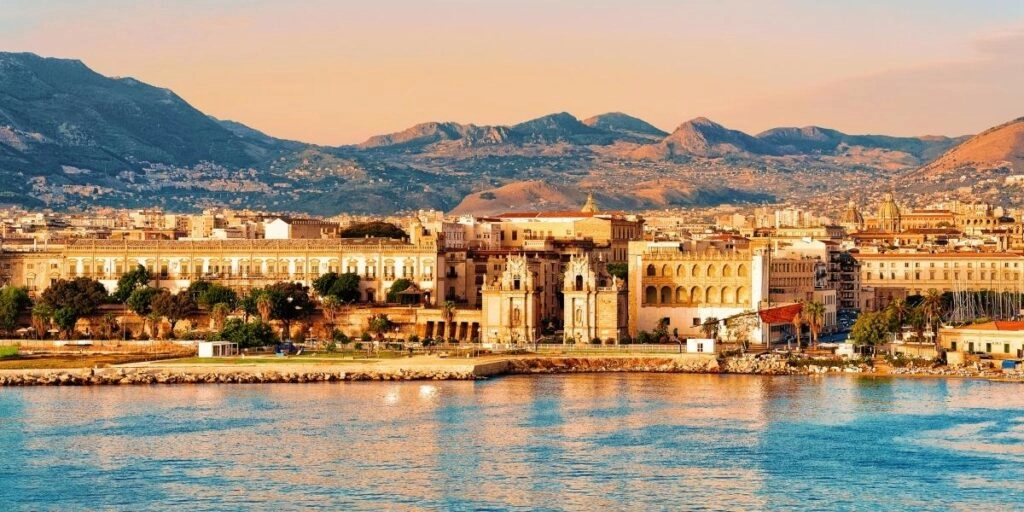
When to Visit Palermo
The best time to visit Palermo (and Sicily) is between May and June , or September and October .
The late spring and early fall months offer balmy temperatures in the mid 70s, ideal for city visits, as well as being the best time to score bargain flights and hotel deals.
If you plan on visiting Palermo in July or August , you’ll find lots of crowds and queues for the top Palermo attractions, higher prices and the hottest temperatures of the year, which can be unpleasant in the city.
Winter sees temperatures in the low 60s, but you’ll find greatly reduced hotel rates and a lot fewer people, although flip-flops and shorts are firmly off the packing list.
Is this your first time visiting Italy? Get all the information you need in our Italy Travel Guide , including what to pack, the best time of year to go, getting there and practical tips to help you have the best trip!
Palermo Trip Resources
Fly into Falcone Borsellino International Airport.
Drive in from Europe or hire a car in Italy
Travel Insurance
Medical costs, delays and lost luggage
Getting to Palermo
If you are flying to Palermo, you will land at Falcone Borsellino International Airport . The quickest way to get into the city is by train, there are two trains that run every hour and take just over 30 mins to Palermo Centrale. The station is located in the basement of the terminal. Check out the timetable and buy your tickets here .
You can also take a bus, the bus stop is located at the exit of the terminal, on the ground floor by the arrivals area. There is a bus every 30 mins and this gets you to Piazza Castelnuovo in the centre in 30 minutes. You can buy your tickets here .
You can also book a private transfer from the airport with Klook directly to your accommodation in the city. Klook works with a large range of local operators to bring the the best options and prices for your transfer.
Where to Stay in Palermo
Luxury: Palazzo Natoli Boutique Hotel – Booking.com | Agoda
Mid-Range: Casa Nostra Boutique Hotel – Booking.com | Agoda
Budget: Hotel Posta – Booking.com | Agoda
Hostel: A Casa di Amici – Booking.com | Agoda
Things to See & Do in Palermo
You could easily spend a month in Palermo eating brioche con gelato for breakfast and drinking cold beers in the Piazza della Kalsa by night, with a little culture sandwiched in between. But if you don’t have a month and want to visit Palermo in one day, a mere 24 hours in the city will do to get a good taste.
If you prefer to have your day organised, take a walking tour of Palermo, where you’ll have the added benefit of a guide to share the city’s fascinating history.
Interactive Map of Your Palermo Itinerary
How to use this map – Use your fingers (or computer mouse) to zoom in and out. Click or touch the icons to get more info about a place, and click the arrow in the box top left to open the index. To add to your own Google Maps account, click the star next to the title of the map.
Wander Quattro Canti
One of the most famous intersections of Europe, the ‘four corners of Palermo’ was built at the beginning of the 17th century. Quattro Canti is also one of the finest examples of grand city planning in Europe and a glorious place to start your Palermo one day itinerary.
This Baroque plaza, officially called Piazza Vigliena, is where the Palermo streets of Via Maqueda and Via Vittorio Emanuele intersect. It has eight sides – four are the streets, and the other four are the magnificent curved Baroque facades, complete with fountains which embrace the plaza. This is the perfect place for endless cups of espresso as you watch Palermo come to life.
Each facade, although nearly identical, depicts different themes at different levels – the four seasons for the fountains, four Spanish rulers of Sicily, and the four female patron saints of Palermo. This is a must-photograph spot and a very lively introduction to the grandeur of the city.
TOP TIP: Literally on the corner of Quatti Canti and Via Vittorio Emanuele is the beautifully frescoed Sicilian Baroque Catholic Church of Saint Joseph of the Theatine Fathers or Chiesa di San Giuseppe dei Padri Teatini. We preferred it to the cathedral, and it’s free to enter.
RELATED POST: Southern Italy: Discover the Best 33 Places To Visit
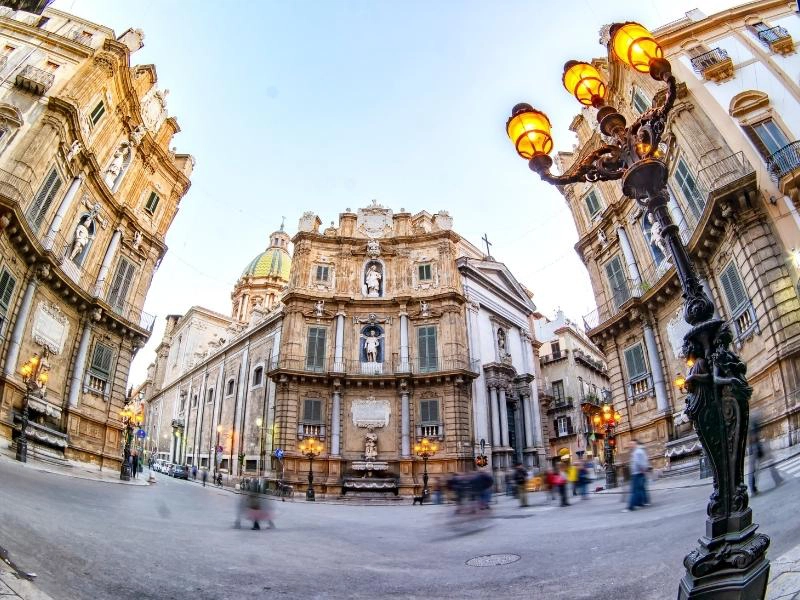
See Fontana Pretoria
The 16th century Praetorian Fountain depicts the twelve Gods of Olympus, plus the animals and the rivers of Palermo. It’s gigantic, fabulous, and totally dominates Piazza Pretoria.
The fountain was once in the garden of a nobleman in Florence, but he fell on hard times and sold it to the city of Palermo. In the 18th century, on account of the nudity, the square, which is called Piazza Pretoria, became known as Piazza della Vergogna – the Square of Shame.
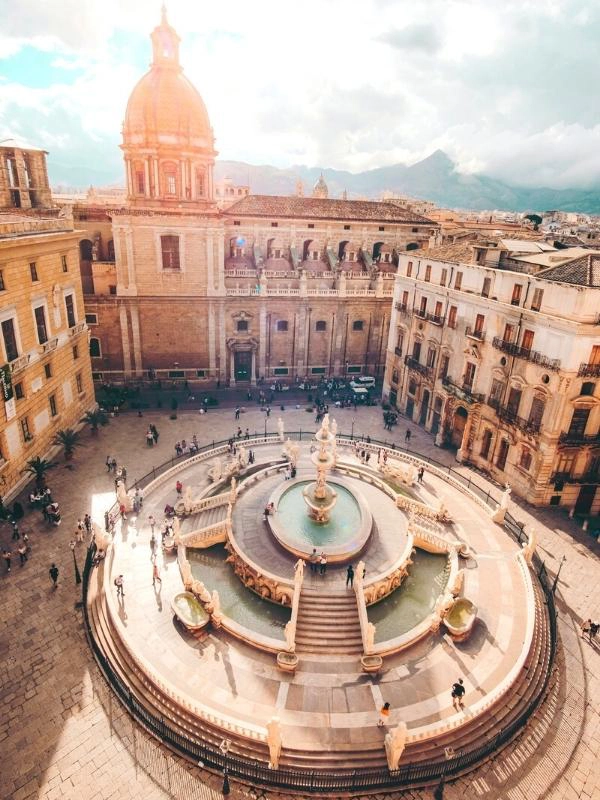
Admire the Church and Monastery of Santa Caterina d’Alessandria
On the east side of Piazza Pretoria is the Chiesa e Monastero di Santa Caterina d’Alessandria, a former Dominican monastery and church.
The exteior is plain and simple, but this is just a facade for what hides inside! The magnificent interior of the church is a masterpiece of 16th century Sicilian Baroque, which will take your breath away as you enter.
You can also access the roof terrace of the buildings for fantastic views of Fontana Pretoria and the surrounding city center.
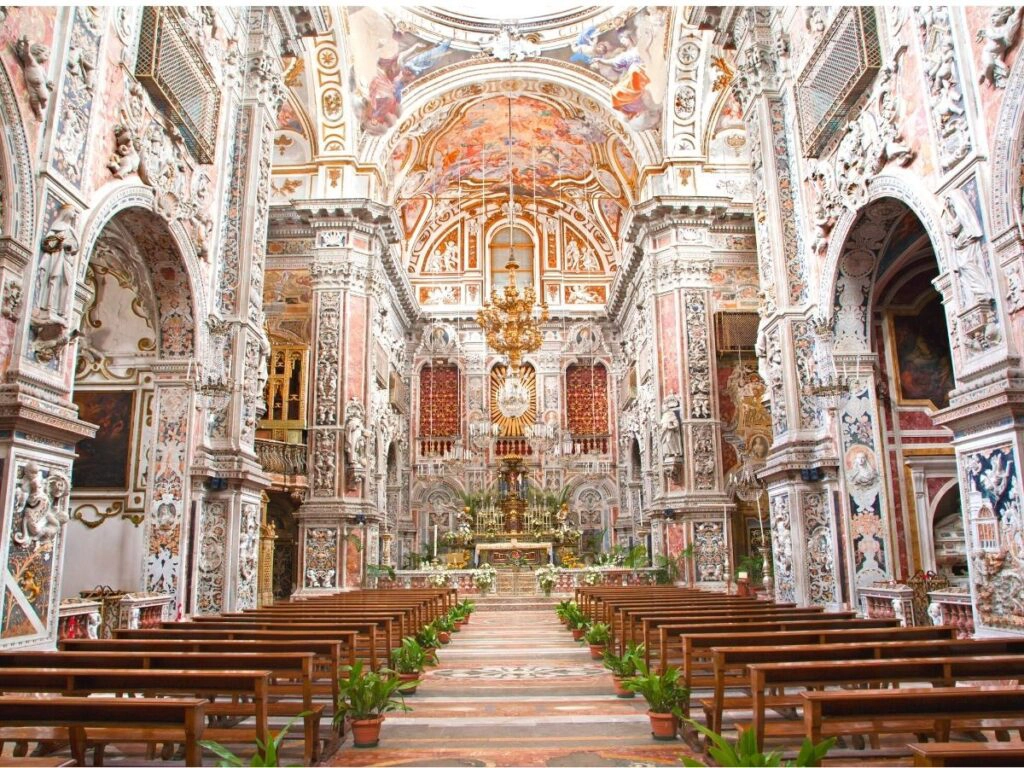
Step Inside Santa Maria dell’Ammiraglio
Saint Mary of the Admiral, also more popularly called La Martorana, is a 12th century church which combines Islamic architecture details, such as elaborate niches and geometric motifs, with stunning Byzantine-style mosaics.
Sicily was under the rule of the Arab Emirate of Sicily from the early 9th century through 1061 and the resulting Arab-Norman architecture of Palermo is like nothing you have ever seen. Or rather, it’s like many things you’ve seen, but all mashed together in an overload of stylistic impressions.
You’ll see this Arab and North African influence in many churches that are UNESCO World Heritage Sites throughout old Palermo.
When the Normans came, they had churches and palaces built in a style that drew on Western, Islamic and Byzantine styles, and skilled Arab craftsmen contributed the intricate geometric patterns, muqarnas ceilings, and other distinctive details. Seeing them in the same space as the glittering, golden Byzantine mosaics is astonishing.
When you buy your ticket to visit Santa Maria dell’Ammiraglio, you can pay one price or a slightly higher one – the slightly higher price gains you a greatly discounted entry to many other churches in Palermo.
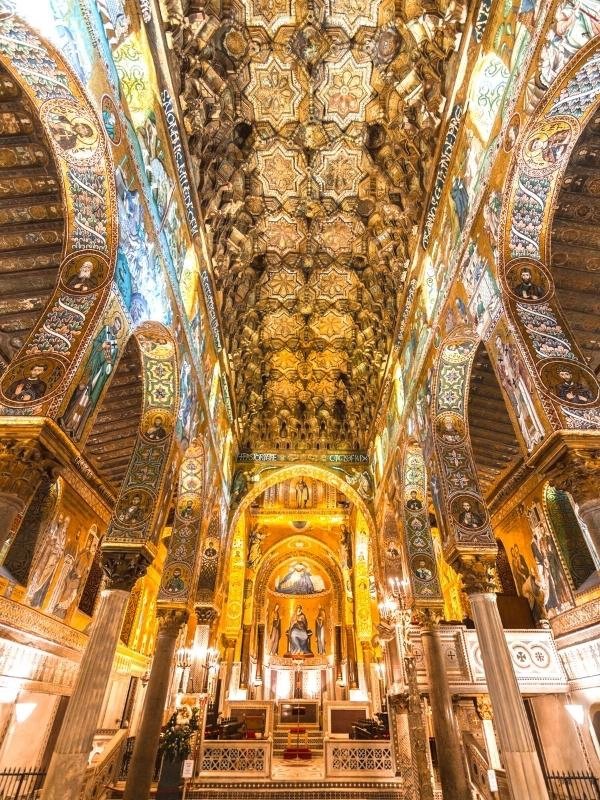
Visit the Church of San Cataldo
Also on the stunning square of Piazza Bellini is the Arabian-Norman Catholic church of San Cataldo which was constructed in 1154 but not fully completed.
Simple and elegent inside, it is listed as a UNESCO World Heritage Site and you can walk through its atmospheric halls and chapels.
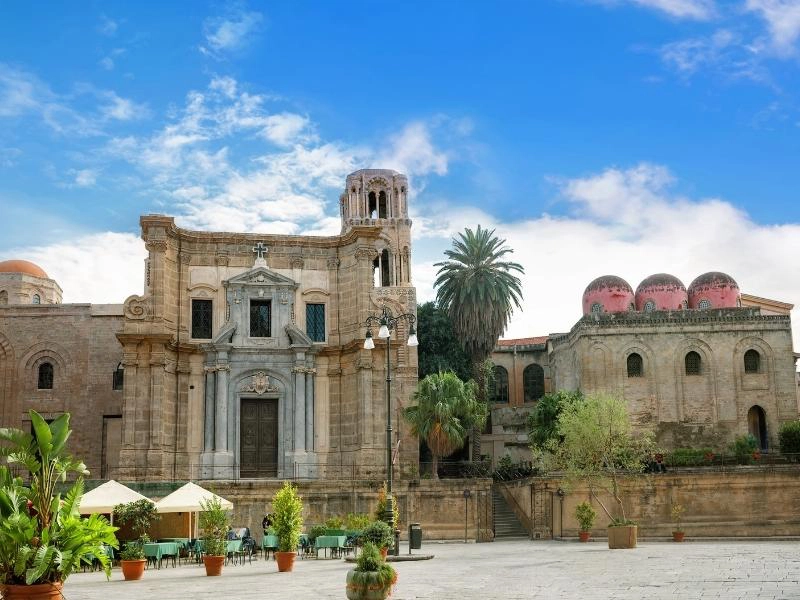
Join the Locals at a Public Market
Mercto di Ballaro, a Palermo must see, is a lively, messy, and delightful outdoor public market with fish, meat, fruit and vegetables alongside housewares, located near the Stazione Centrale.
Morning is the best time to check out the displays of fresh produce and spices, and maybe get some edible souvenirs. Mercato del Capo and Mercato Vucciria are also well known markets in the city, but will take longer to walk to than Mercato di Ballaro, which is an easy stop between churches!
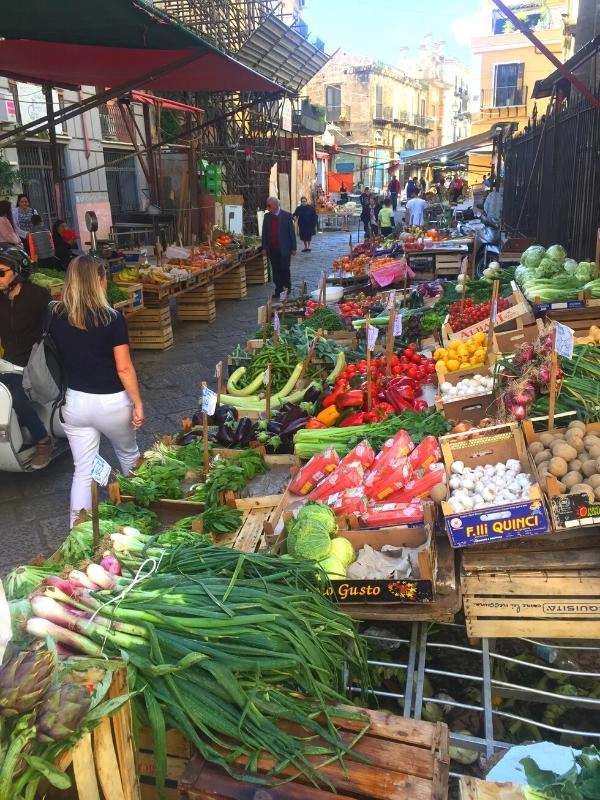
Visit San Giovanni degli Eremiti
Originally of the 6th century, but reconstructed in the 12th century, this glorious church is topped with distinctive Arab-looking domes.
The dramatic interior of raw stone has a wonderful sense of space, while elaborate floors display motifs of Islamic origin.
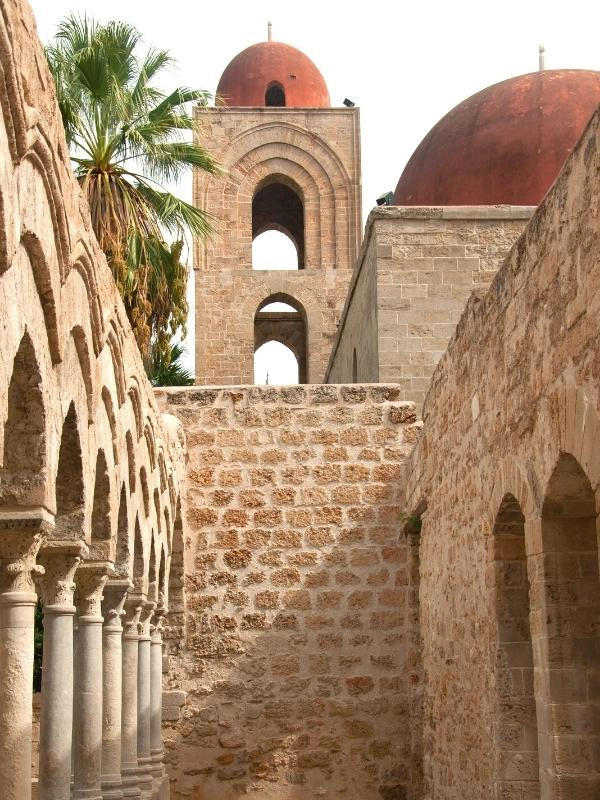
Explore the Palace of the Normans and Cappella Palatina
Next to the old city gate of Porta Nuova, and one of the top things to do in Palermo according to Lonely Planet, the spectacular Palazzo dei Normanni was home to the Kings of Sicily throughout the rule of the Normans, and for all rulers thereafter.
This magnificent complex comprises both the palace rooms with fantastic frescos of mythology and other scenes, such as an Asian room.
But the highlight of this UNESCO World Heritage Site is the Palatine Chapel, considered the finest of the Arab-Norman chapels, with stunning Byzantine mosaics and rich Arab-inspired details in the inlaid stone floor and the Muqarnas ceiling.
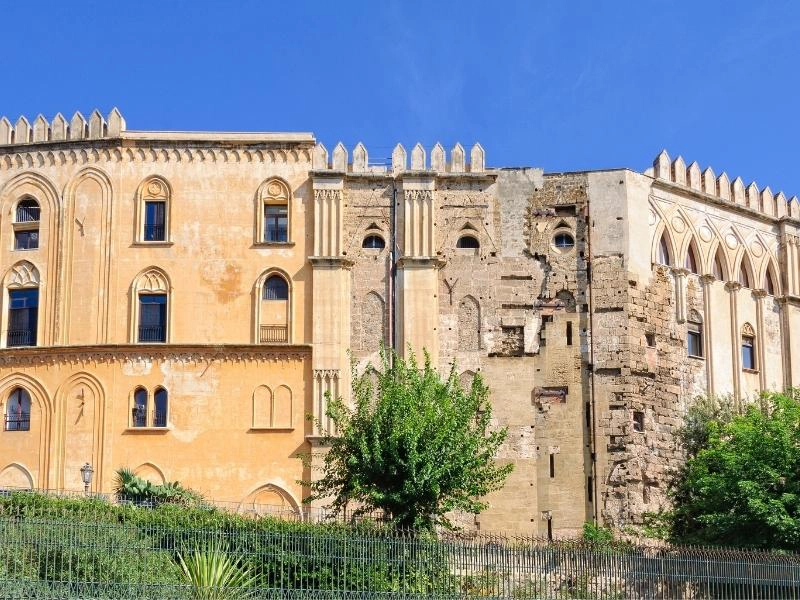
Discover the Cathedral of Palermo
Basically whatever architectural style you like – Norman, Moorish, Gothic, Baroque – you’ll get it in the sacred yet sumptuous beauty of the Cattedrale di Palermo.
Look for the Meridiana – a bronze line running north to south in the cathedral’s floor. There’s a small hole in one of the domes, so the sun crosses the meridian at solar noon at different spots along the line, according to the time of year. The ends of the Meridiana mark the summer and winter solstices, while marble inlays along the meridian represent the signs of the zodiac throughout the year.
TOP TOP: To enter Palermo Cathedral, you will need to cover your shoulders and legs above the knee. Make sure you carry a light scarf for your shoulders and don’t wear short shorts or hot pants if you want to enter. You should follow this rule for all the churches in Palermo (and Italy for that matter!)
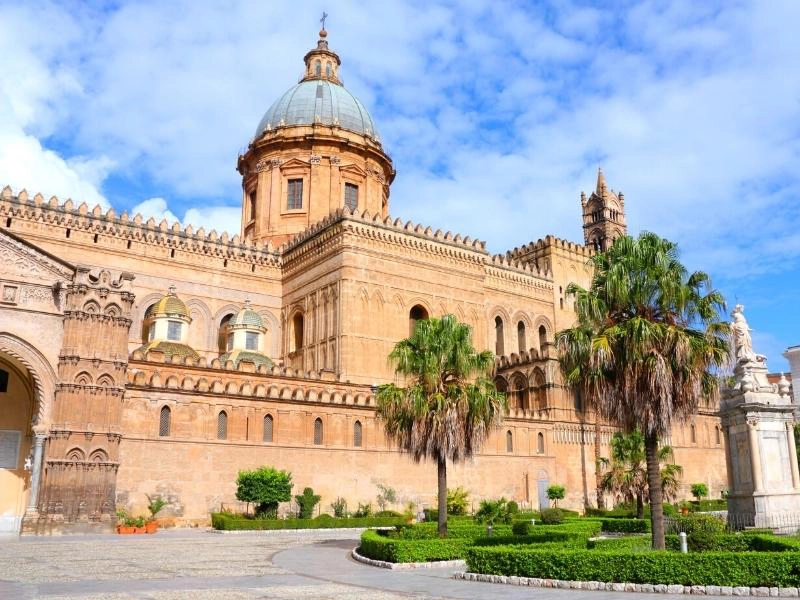
Teatro Massimo
The Massimo Theatre, meaning maximum, was the largest opera house in Italy, and the third largest in Europe when it opened in 1897, surpassed only by the opera houses of Paris and Vienna.
Cinephiles know it as the grand staircase is where the ‘Godfather’ trilogy reaches its climax. Note the gorgeous Stile Liberty (Italian Art Nouveau) kiosks outside.
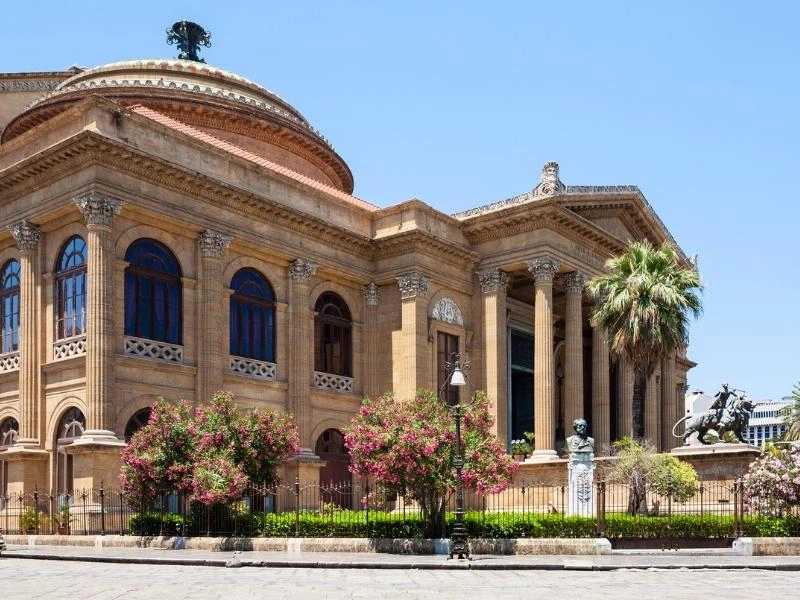
Other Italian City Itineraries
- The Best of Rome in 36 Hours
- One Day in Florence – Itinerary, Map, Tips & Guide
- FREE Self-Guided Bologna Food Tour
End the Day a Local Wine Bar
The perfect way to end a day in Palermo, check out our favourite wine bars…
Enoteca Picone
Enoteca Picone has been around since 1946 and is one of Palermo’s most popular wine bars. With a wide selection of international and local wines, you’ll find something to enjoy, alongside a great range of small plates. End your Palermo day in style!
La Nicchia Enoteca
The chic wine bar La Nicchia Enoteca is a popular choice and a great spot for an evening glass of cool prosecco, Italy’s (excellent) answer to champagne.
Bottiglieria del Massimo Champagneria
Opened the Bottiglieria del Massimo in 1968, this family-run bar is one of Palermo’s best known and claims to serve the best fizz in the city. It can get busy, so reserve a table in high season.
Explore the Palermo Street Food Scene
Pani ca Meusa is an extremely popular and authentic taste of Palermo. We won’t mince words – it’s a spleen sandwich. Fans of nose to tail dining will love these tender thin slices of spleen and lung in a savoury sauce on a bun.
For everyone else, there’s panini, pizza, and other fast food classics at Ninu u Ballerino , a popular Palermo fast food place. Line up in the bright neon light, get your snacks, and join the crowds of happy locals standing up around barrels in the street. Don’t overdo it though because gelato for dessert is essential!
Where to Eat in Palermo
Antico caffe spinnato.
There are so many delicious things to eat in Palermo you need to get started right away so you don’t miss anything.
One of the most popular cafes in Palermo, located on a cheerful pedestrian street, is the historic Caffe Spinnato – open since 1860. You can enjoy a cannolo (that’s a cannoli but in the singular) and a coffee at a table inside or out, but it’s cheaper and more fun to have it standing.
TOP TIP: For self-service, order from the cashier and pay, and then give your ticket to the guys behind the counter.
Trattoria Ai Normanni
Lunch is a serious meal in the Mediterranean. Join the locals at a neighbourhood trattoria like Trattoria Ai Normanni , very close to the Norman Palace.
Note the menu has ‘primi’ and ‘secondi’ – by all means follow the local custom and order two courses, no one’s in a hurry here.
Antipasti is a classic first course – a selection of vibrant tastes including the Sicilian classic ‘caponata’, For a main course, you could have either a meat dish, fish, or pasta. Pasta con le sarde is a local specialty, sauced with sardines, saffron, and fennel and is absolutely delicious.
The lively Via Maqueda is perfect for an evening passagiato , a little tacky souvenir shopping, and of course, sampling some of Palermo’s famous street food.
One of the most approachable of Palermo’s street food classics is the arancini. These deep fried balls of rice coated in breadcrumbs and stuffed with a number of fillings so resemble the orange for which they’re named.
At Ke Palle , you can try arancine d’autore (home-made and home fried) in a great variety of flavours, until you’re too full to eat any more!
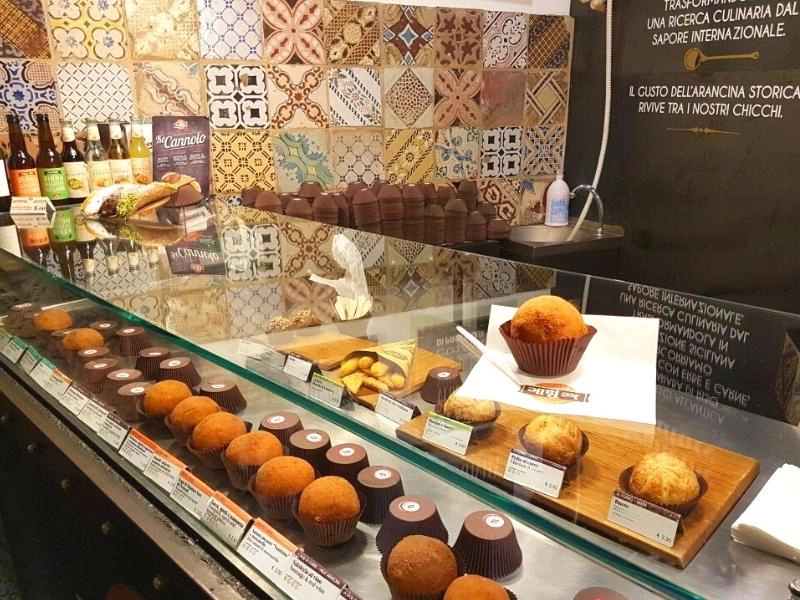
Top Five Palermo Travel Tips
- Don’t waste your time on any food that isn’t fabulous or doesn’t speak to your taste buds – there are too many things to try as it is.
- Be safe – like any city there can be pickpockets and other petty crime – maybe just a little more in Palermo. Also, petty scams are popular – agree prices for cabs and horse drawn carriage rides prior to boarding. Being asked for an extra €10 “for the horse” at the end of a Palermo sightseeing ride is common!
- A little Italian goes a long way – people don’t speak as much English here as in some other European cities, and the effort gets you a smile. Learn a few words of the language for your Palermo trip.
- This is an elegant city – dress for cathedrals, but with shoes for keeping your footing on slippery cobblestones in the marketplaces and alleys.
- Traffic in Palermo is crazy. If you’re in a hire car, make sure you have parking reserved and a sat nav to get you there. If you’re a pedestrian, be mindful when crossing roads. Sicilian drivers like to stray and seem to appear from any direction, so look both ways!
More Than One Day in Palermo?
If you can stretch to 36 hours in Palermo or have another day to spare, add these must see in Palermo places to your itinerary;
Capuchin Catacombs
A 20 minute walk from the old town will take you to one of the most extraordinary Palermo sights, the Capuchin Catacombs , a burial place where over 8,000 mummified corpses provide a detailed historical record. This has to be one of the most unusual things to do in Palermo.
Regional Archaeological Museum
If you find the ancient history and architecture interesting, the Regional Archaeological Museum Antonio Salinas , which houses a large collection of Ancient Greek art and artefacts from Sicilian history, is well worth a visit.

Hit the Beach
If you’re visiting between May and September and want to slow the pace, head for the sandy stretch of Mondello Beach, one of best Palermo beaches and just a 15 minute drive away, or visit the Botanical Garden for a spot of peace with added shade!
Take a Day Trip
Why not take a day trip? Popular day trips from Palermo will take you to some of the best places to visit in Sicily, including the mighty live volcano of Mount Etna and the historical sites of Taormina, the Temple of Segesta and the Valley of the Temples in Agrigento.
Monreale and Cefalù Half Day Trip
If you take only take one day trip from Palermo, take this highly rated and well organized half day trip.
Explore the magnificent Norman cathedral of Monreale on the slopes of Sicily’s Monte Caputo on this six hour tour from Palermo. Go to the historic town of Cefalù and learn about the city’s Greek origins, and see this beautiful town’s highlights.
With a professional guide to offer insights, an organized tour is the perfect opportunity to see more of Sicily in less time!
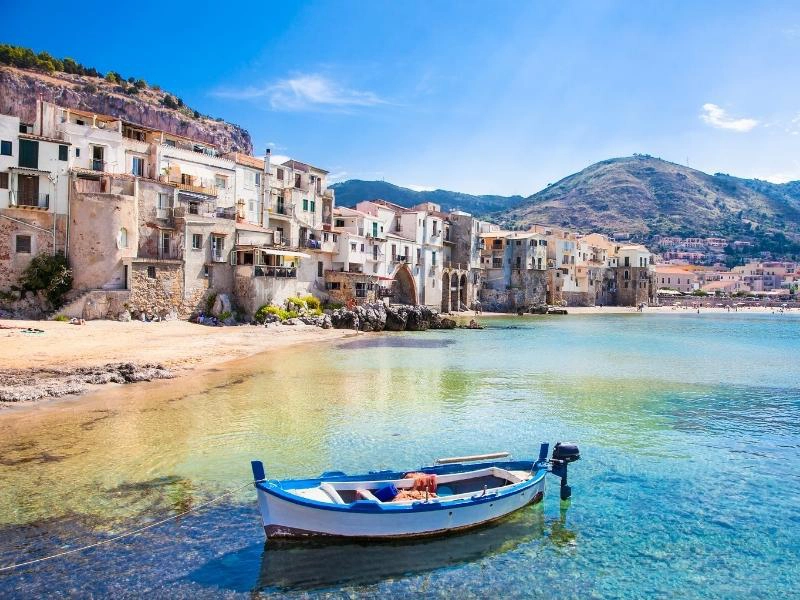
Written for The Gap Decaders by Amber Charmei of Thessaloniki Local
Are you looking for more Italian travel ideas? Check out these top posts…
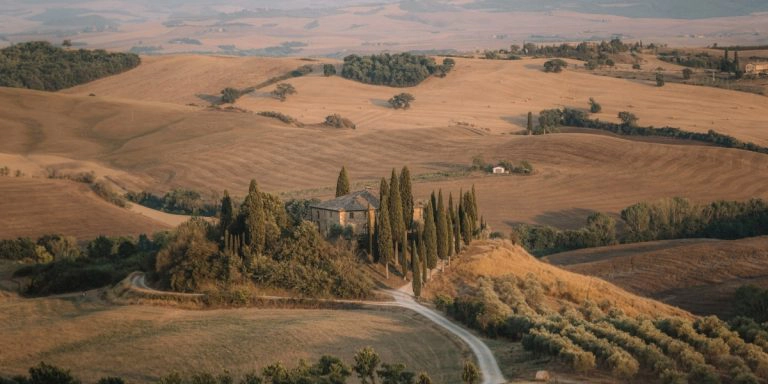
The Ultimate Bucket List Italy Road Trip
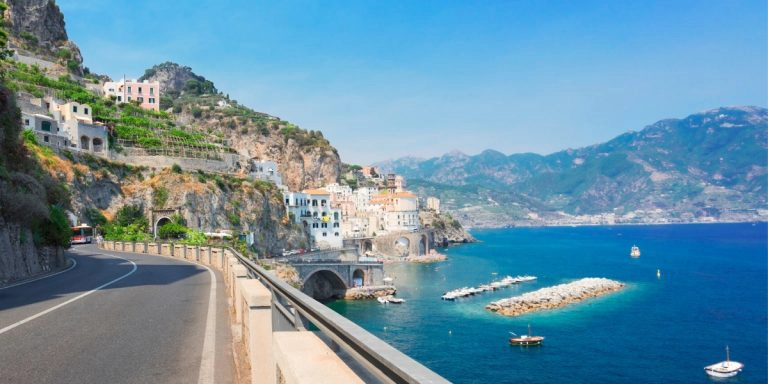
A Bucket List Amalfi Coast Road Trip
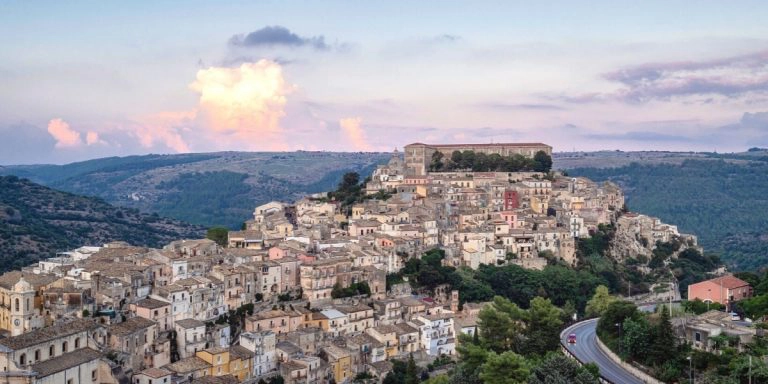
Sicily Road Trip – Itinerary, Tips & Map
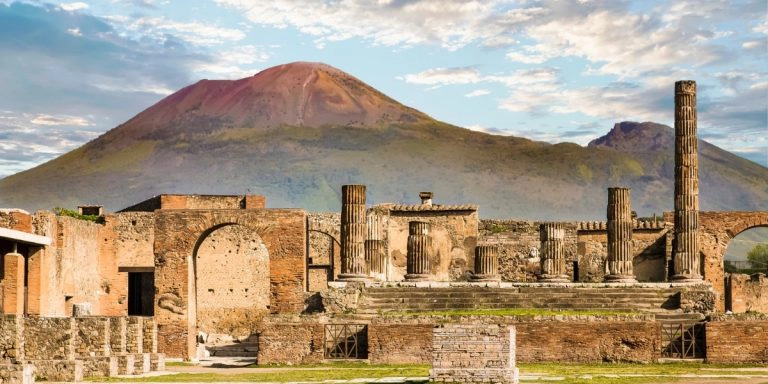
How to Visit Pompeii & Vesuvius in One Day
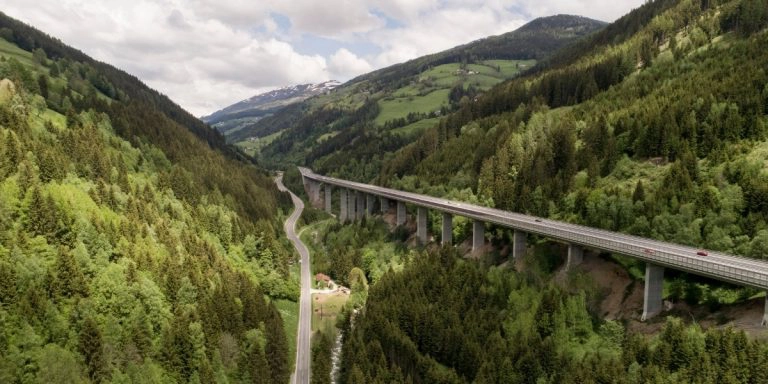
Driving to Italy from UK: Best Routes & Driving Tips
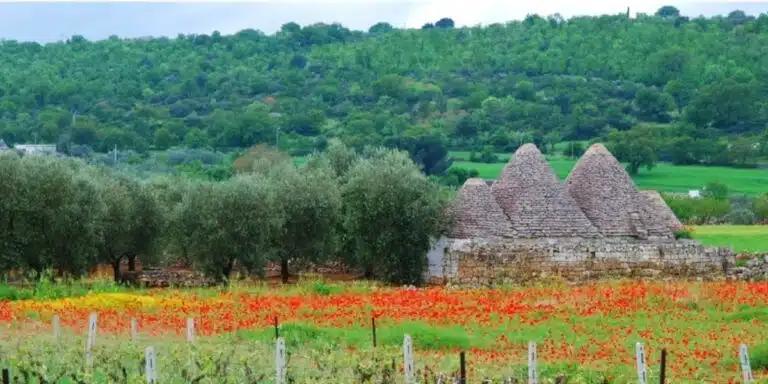
Puglia Road Trip: The Best 7 Day Itinerary + Map & Tips
Love it pin it.
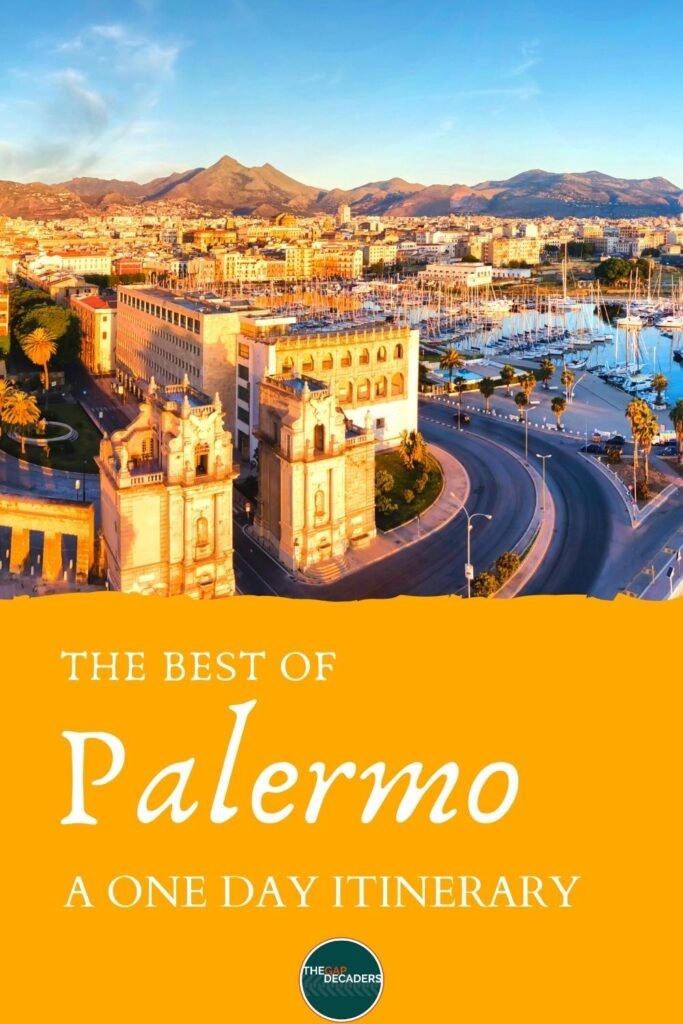

Free Walking Tour Palermo
Join the free welcome tour of palermo, get to know the city led by a local tour guide.
Join our free walking tour of Palermo , follow your Freely guide through the shady backstreets and the bright elegant squares of the city center, learn about stories and facts that make this city so unique. Twenty-six centuries of glorious history and fine culture impressed on every single stone of the old city centre. What better way to feel this if not… by walking!
We run a Palermo free walking tour that combines history & art with daily life, traditions and cuisine . A full bouquet of Palermo shades and scents. Our itinerary is purely a Palermo Welcome Tour. We will be happy to introduce you to our culture without filters of any kind which means that we won’t only show you and talk about the bright side of the city but also about its dark shadows. You wanna see the main historical attractions of Palermo? This is the right tour! You want to see a food market? Freely’s Palermo Welcome Tour is still the right answer! “Beauty and Decay, Death and Resurrection” this is how we better describe our beloved city. A place that never dies, that never succeeds, that never fails. Palermo needs love. And talking about love, we Freely guides are 100% Palermitans , we love our city and we want you to love it too! Trust us: a Palermo tour by locals is what you need to get in touch with the real, authentic soul of this lively city.
Read and Reserve
- When? Check calendar!
- Meeting point Via Maqueda 453 (opposite Teatro Massimo). Find your guide with the badge and the FREELY sign
- Duration 2 hrs
- Type Introductory tour of Palermo city center
- Price Free tip!
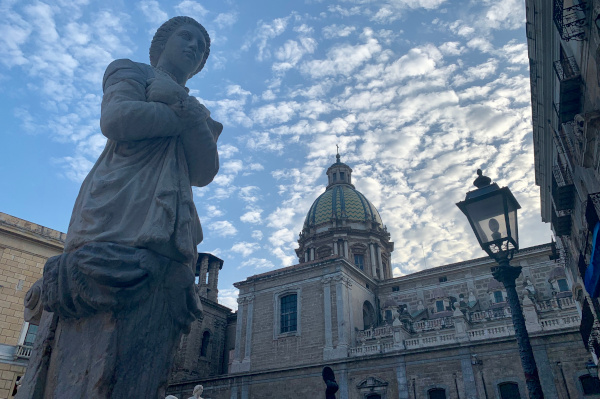
Free Palermo walking tour: What to Expect
The itinerary covers different type of attractions: backstreets, main monumental squares. We will show you the place where the patron saint of Palermo was born, only few steps away from our favorite bars of Palermo. We will walk you to the main crossroad of the city center where you will learn some fun street stories. The free guided tour of Palermo starts from the Bar Ruvolo , situated right opposite the opera house Teatro Massimo and ends at the Cathedral.
During the Free Palermo Welcome tour you will get all the directions and tips you need to enjoy the rest of your stay like a real local. We will recommend you our favorite wine bars, restaurants. We will give you the right contacts to do fun activities in Palermo doing so build up a memorable experience in town! This Free Walking tour of Palermo is the ideal activity for travellers who want to learn and understand our culture without filters.
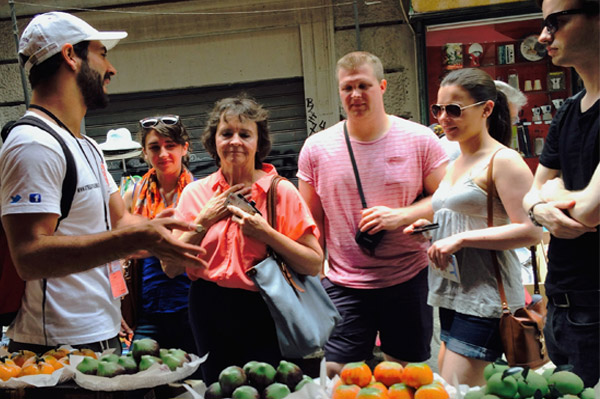
Highlights of our Palermo free walking tour
- Orientation walk around the city center (ideal for newcomers!
- Main information about Palermo’s history and art
- Insights on Sicilian traditions, habits and social issues
- Tips for restaurant and leisure moments
- Presentation of other activities (events, tours, excursions)
Is this tour free? Like all free walking tours around the world, this Palermo Welcome Tour does not require the purchase of a ticket for a specific amount. However, “ free ” stands for “ free tip ” , so you can leave your guide any amount based on your appreciation of the guide’s performance and also the overall quality of the tour. Reserve your spot to make sure you live the Palermo experience with Freely!
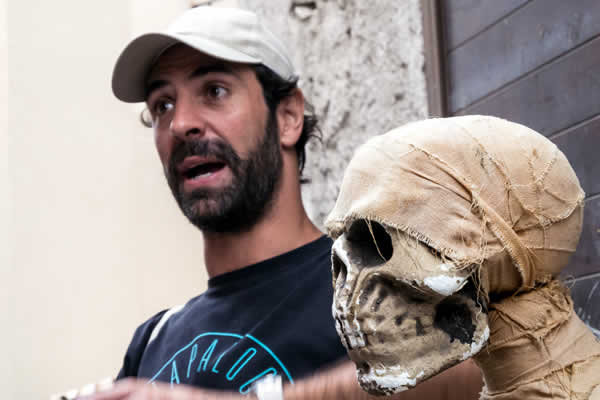
The free walking tour of Palermo is a great introductory activity to the city. First of all it will make you relax and shake off all the stereotypes that affect the reputation of the Sicilian capital. Secondly, it will give you a local perspective and filterless understanding of its people. What else? Come join us, you will be more than Welcome to Palermo!
Private tour option
We can also arrange private tours of Palermo on request. We will design an itinerary based on your interests! Private walking tours are delivered for a specific price based on average Sicilian tour guides’ hourly rates. To request a private tour go to “contact us” page. And…If you want to have a deeper dive into the local cuisine, book with our partner Streaty a Palermo street food tour!

Walking tour in the Arab Kalsa district

If you have already gone on the self-guided tour of Albergheria and Capo districts and you still haven’t gotten enough, this new guide is sure to give you another needed dose of the area’s culture.
Throughout this plan, you will see an expertly crafted path through the iconic area of Palermo where Arab emirs once resided, leaving the entire district with a distinct flair uncommon to any of the others.
While this might have been greatly influenced by the Arabs that used to live there, you shouldn’t see anyone walking around with a camel in tow. But if you take a few moments to appreciate the architecture, it isn’t hard to still recognize their presence on the district.
But before we get far off topic, let’s focus on what you need to see in this one day tour of Kalsa.
Quick Overview of Your Palermo Walking Tour: Kalsa District
Start your day off with a hearty lunch, because you have some incredible sites to visit before you get to lunchtime. In the morning, you are going to see a Palazzo Abatellis collection, the Gancia Church , Spasimo Church and the uniqueness of the Magione Church .
You should definitely have a great lunch at Antica Focacceria San Francesco . This has been mentioned so often in tourist guides of the region that you are likely to see more tourists than locals here, but the food is well worth your time.
You have a few more important sites to visit after you’ve had your fill at lunch. You will be checking out Piazza Marina and Palazzo Chiaramonte Steri (where you can see Vucciria by Guttuso and Museo dell’inquisizione ).
The tour will cap off with a true highlight, the Pretoria fountain .
The Free Walking Tour In Palermo: Kalsa District
start: palazzo abatellis – galleria regionale siciliana.

- Location : Via Alloro, 4
- Hours of Operation: 9 am – 6:30 pm Tuesday – Friday 9 am – 1 pm Saturdays, Sundays, and holidays
- Admission : €8 (available €4 reduced ticket)
What better way to start your morning than with a little dose of quality art? While I might be a proud citizen of Palermo, we typically can’t compete with the likes of Rome, Venice and Florence when it comes to places featuring quality artwork.
Abatellis Palace might offer the closest that Palermo will ever come to competing with some of the more art focused cities in Northern Italy.
A historian of art (not me, of course) might be able to label all of the works found here and why they are significant. I personally find myself drawn to a handful of them, which I’ll share with you now.
I would think that the most famous of all of the works here would be the 🔥 Virgin Annunciate by Antonello da Messina . While it might not be monstrous in size, true skill knows no size. It is one of the most fascinating creations in the history of art.
This woman with her piercing gaze, her suspended hand, and her veil which frames her face will leave you at a loss for words. Which is a very strange occurrence for me.
If you are not completely floored by the awe-striking nature of the Virgin Annunciate , another woman here will surely get you there. Check out the 🔥 bust of Eleonora of Aragon . This is a depiction of the niece of Federico d’Aragona, former king of Sicily.
This bust would spend much of its life atop the tomb of Eleonora (who died in 1405) in the Abbey of Santa Maria del Bosco Calatamauro.
While I’ve got you thinking about tombs and death, there’s a nice little canvas homage to death you shouldn’t pass by. It’s called 🔥 The Triumph of Death , a painting done in the 15th century by an unknown painter.
The image displays how death comes for everyone, regardless of someone’s wealth or social status.
In another room you are going to see works of art from Antoon Van Dyck , a baroque artist who lived in Palermo in 1624, a time of pestilence for the region. He would be known for painting Palermo’s patroness, 👉 Saint Rosalia .
There are few words that can describe the palace without you seeing it for yourself. This huge Catalan-Gothic structure was designed by Matteo Carnilvari at the end of the 1400s.
While it started out as a residence for Francesco Patello or Abatellis, it would then become a home for Dominican sisters coming in from Saint Caterina monastery.
During World War II, this structure would be massively damaged by a bomb. It was not rebuilt to the way it is today until 1954.
STOP #2: Santa Maria degli Angeli Church (Gancia)

- Location : Via Alloro 27
- Hours of Operation : Monday – Saturday 9:30 am – 1:30 pm Sundays and Holidays 10:30 am – 1:00 pm
- Admission : Contribution not lower than €2.50
Once you have left Palazzo Abatellis , prepare your brain for another great wonder that lies just over 100 steps away, the Santa Maria degli Angeli Church .
This structure was originally erected in 1490, and served as a shelter for the sick and needy (known then as Gancia ). Now, it is one of the most impressive churches in the city, boasting the 🔥 oldest pipe organ (from 1620).
This distinct Catalan-Gothic design is evident in the arches and squared and bare ashlars. There are valuable works of art stored in the numerous side chapels within its walls, such as the Pietro Novelli and Serpotta.
Inside, there is also a chapel that is owned by a prominent Spanish royal family, which has been appropriately dedicated to the Lady of Guadalupe.
You might not consider Sicilians famous for much other than the mafia, but we are also well known for our devout beliefs. Ironically enough, there are a lot of similarities between the mafia and religion within Sicily. For example, nearly every one of the greatest Godfathers in history were super religious.
Perhaps one of the most revered images to all of the 👉 people of Palermo happens to be in the church here, the 🔥 Child Jesus . This has been the subject of many miraculous events, not to mention the image itself is remarkably beautiful.
Most Sicilians believe that God himself uses this very image to manifest His glory and to grant graces for His people.
You will find an interesting spot outside on Via Alloro Street . There will be a plaque commemorating two Patriots Fillipo Patti and Gaspare Bivona who escaped the Bourbons through an elaborate plan.
They went into the convent and pretended to be dead, then dug a hole to escape and succeeded through the assistance of some women who started a skirmish to draw attention from the awaiting Bourbons.
STOP #3: Santa Maria dello Spasimo Church

- Location : Piazza Carlo Maria Ventimiglia, 13
- Admission : Free
Another stop on your walking itinerary needs to be the Spasimo church . This is only a short 300 meters away from La Gancia and is well worth your time to check out.
There is an almost unsettling feeling you get when you see that the church has no roof . Once you have come through the courtyard, you will enter into an open-air nave, which is a result of a vault collapse in the 18th century that has never been repaired in all this time.
These are the kind of ruins that you will see when you look back over romantic paintings of this period.
You might not stand in awe of everything that you see, but it is well worth a visit (especially since it costs you nothing to do so).
Take a little bit of time to educate yourself on the history of this church so that you can see it and appreciate it through understanding eyes. No one wants to be the person looking like a fool, after all.
By now you must want to take a little breather from all of the deep cultural offerings of the area. If that is the case, stop by the 👉 Villa Giulia . Here you can immerse yourself around a magnificent botanical garden and take a few moments to relax.
STOP #4: Magione Church

- Location : Via Magione 44 Hours of Operation : 9 am – 7pm Monday – Saturday 9 am – 1 pm Sundays and Holidays
This next must-see will be one of the cutest churches that you will see in all of Palermo. The Magione is a nice little corner that pulls you away from the hustle and bustle of the area and gives you an immediate sense of peace.
As fascinating as you will likely find this church, you will immediately notice that it is all but devoid of decoration (which in itself sets it apart from other older churches in the region).
There is quite a long story about why this church is significant and why it is worth seeing, but a lot of that might put you to sleep. To avoid this, let’s do the short version.
The style of its design is Arab-Norman and it was built back in 1191. While it has been damaged over wars, it has always been rebuilt to the exact original specifications.
This is an overwhelmingly popular spot for locals wishing to get married. If you yourself are a fan of weddings, you can likely very easily blend in and get a look at some tear-inducing wedding vows from young couples committing themselves to one another.
STOP #5: Chiaramonte Steri Palace

- Location : Piazza Marina 61
- Hours of Operation : 10 am – 6 pm every day
- Admission : €5 (Just Palace Admission) €7.50 (Palace and Inquisition Museum Admission)
At the top of the diamond shaped Kalsa Quarter, you will find the Marina Square . Despite its dark history for executions during the Inquisition, Sicilians still consider this to be the most beautiful square in the entire city.
When you overcome the history involving severed heads, you will find the real gem at the heart of this square: the charming Palazzo Chiaramonte Steri .
Inside, you will find one of the most famous paintings in 20th century Italy, 👉 La Vucciria by Guttuso .
This is a massive and impressive structure that was built back in the 1300s to be a residence for the Count of Modica. It has been owned and operated by numerous other facilities since then, but today it is the rectorate.
The Sala Magna is one of the major artistic draws to the Palace. Cecco, Simone and Pelligrino Darena (from Palermo) painted this gorgeous ceiling over a three year span starting in 1377.
Inquisition Jail
Recently in 2013, a museum for the Inquisition was inaugurated. There is a guided visit through former cells of that time.
You will see artwork ( graffiti ) of the inmates and get a sense of the cruelty that they were forced to endure during this time, as well as the history of what made this period in Palermo so influential.
La Vucciria by Renato Guttuso
This painting is one of the most famous Italian works of art from the 20th century. It is said to describe the feeling that the painter felt when he was passing through the Vucciria Market as a hungry child.
It is a still life painting, but it has quite a lot of life to it. In fact, many of the faces that can be seen in the massive painting are people that the painter knew very well.
It is believed that the swordfish seller in the painting is meant to be a self-portrait of the painter.
STOP #6: Pretoria Fountain (Fountain of Shame)

- Location : Piazza Pretoria
You might be deterred if I told you that there were a multitude of nude men and women waiting for you at the next stop on your walking journey through Kalsa.
The nude people referred to here are the statues adorning the massive fountain, and not a red light district you have unfortunately stumbled into.
This was originally constructed by an Italian Sculptor for a villa in Tuscany owned by Don Luigi de Toledo. It was purchased by Palermo in 1573 to outshine the beauty of the Orione fountain in Messina.
It is also known as the 👉 Fountain of Shame to many Sicilians because of the nude sculptures all over it.
Its placement in front of a prominent church caused a lot of grief for the nuns, who thought the entire ornate fountain was a complete shame.
It isn’t by chance that the Palermo Municipality seat overlooks the square. Prepare yourself as you approach the statues.
This fountain has been known to pull people into a trance , that has them circling the structure two and even three times, completely enthralled and oblivious to their circling.
With each pass, you might become more and more convinced at how lifelike they actually look, and see new details that you didn’t see the last time around.
The sculpting is so smooth, you want to touch it to make sure it isn’t a real person.
This concludes your walking day trip through the Kalsa District. If you have already taken part in the other two walking tours I have provided ( Capo and Albergheria Districts ), there is just one left that I encourage you to try out. Go from this plan right to the walking tour for the 👉 Vucciria neighborhood .
About Don Tano
I’m full-blooded Sicilian born from the noise of the Vucciria market and the gentle sound of the waves of Mondello. I grew up eating “pane e panelle” and “pasta con le sarde”. But most of all, I grew up with an awareness: Palermo is a beautiful city to live intensely and to love without question!
Leave a Comment Cancel reply

- Walking Tours
Walking tours in Palermo Sicily – Free Tours & more
Walking tours in palermo, free tours & more by local guides.
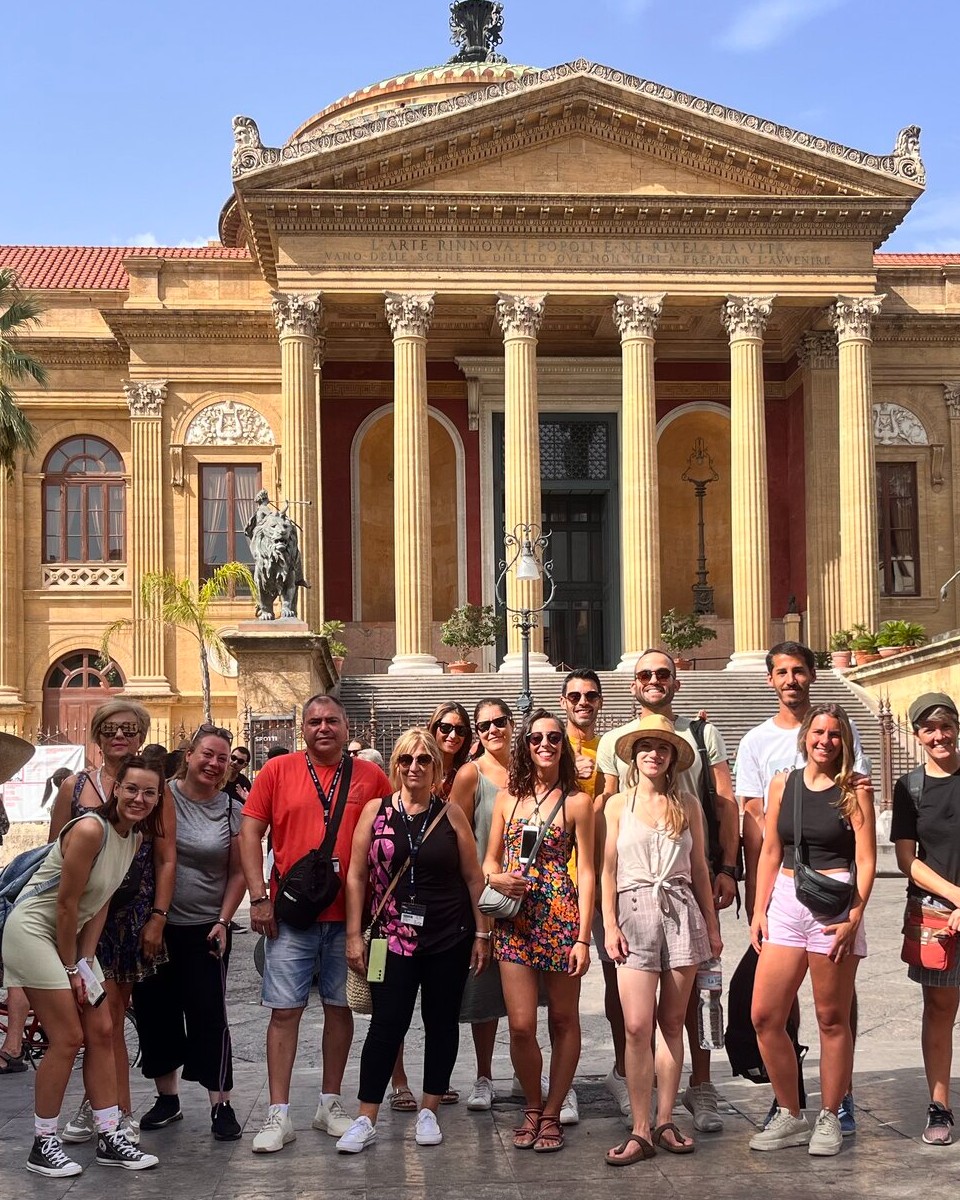
Palermo Free Walking Tour – The Top Attractions
Ideal when you have just arrived in Palermo. Things to do , best sights , street food , mafia stories and much more. This Free Walking Tour of Palermo is for you : )
When: Every day Language: English/Spanish/Italian Duration: 2 hours
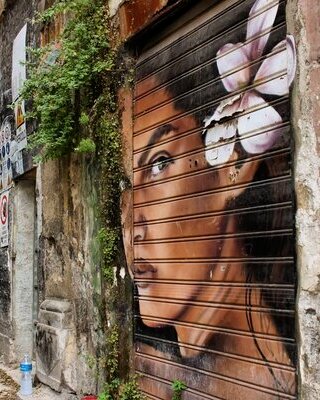
Palermo Free Walking Tour Alternative
In the evening the other half of the city wakes up. Mafia and World War II recollections are tangled with the contemporary city . Learn the secrets of Palermo!
When: Check Calendar Language: English/Spanish/Italian Duration: 2 hours
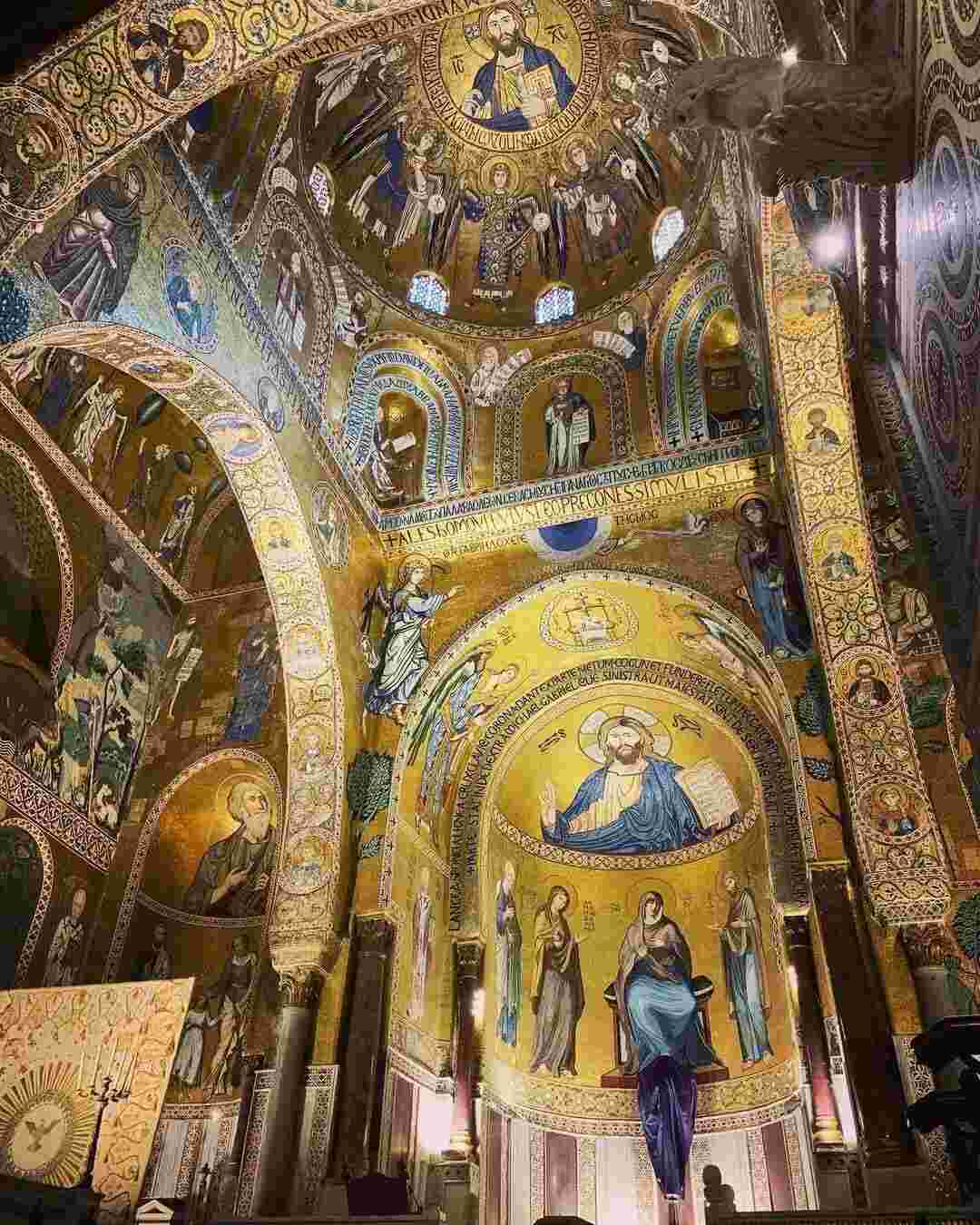
Palatine Chapel & Royal Palace Tour
Discover the essence of Sicily at the Norman Palace , home to the stunning Palatine Chapel in Palermo. Marvel at its Byzantine, Norman, and Islamic art beneath a sky of golden mosaics .
When: Every week Language: English/Spanish/Italian Duration: 2 hours
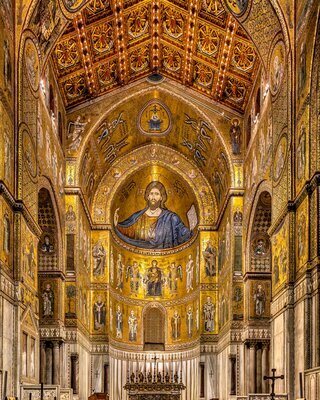
MONREALE WALKING TOUR
This Monreale Walking Tour is about one of the most beautiful examples of Norman architecture , dedicated to the Nativity of the Virgin Mary by William II of Sicily. Since 2015 it has been part of the Arab-Norman Palermo and the Cathedral Churches of Cefalù and Monreale UNESCO Heritage site . Discover Monreale Cathedral on foot with us. Book now your spot!
When: Every week Language: English/Italiano/Español Duration: 2 hours
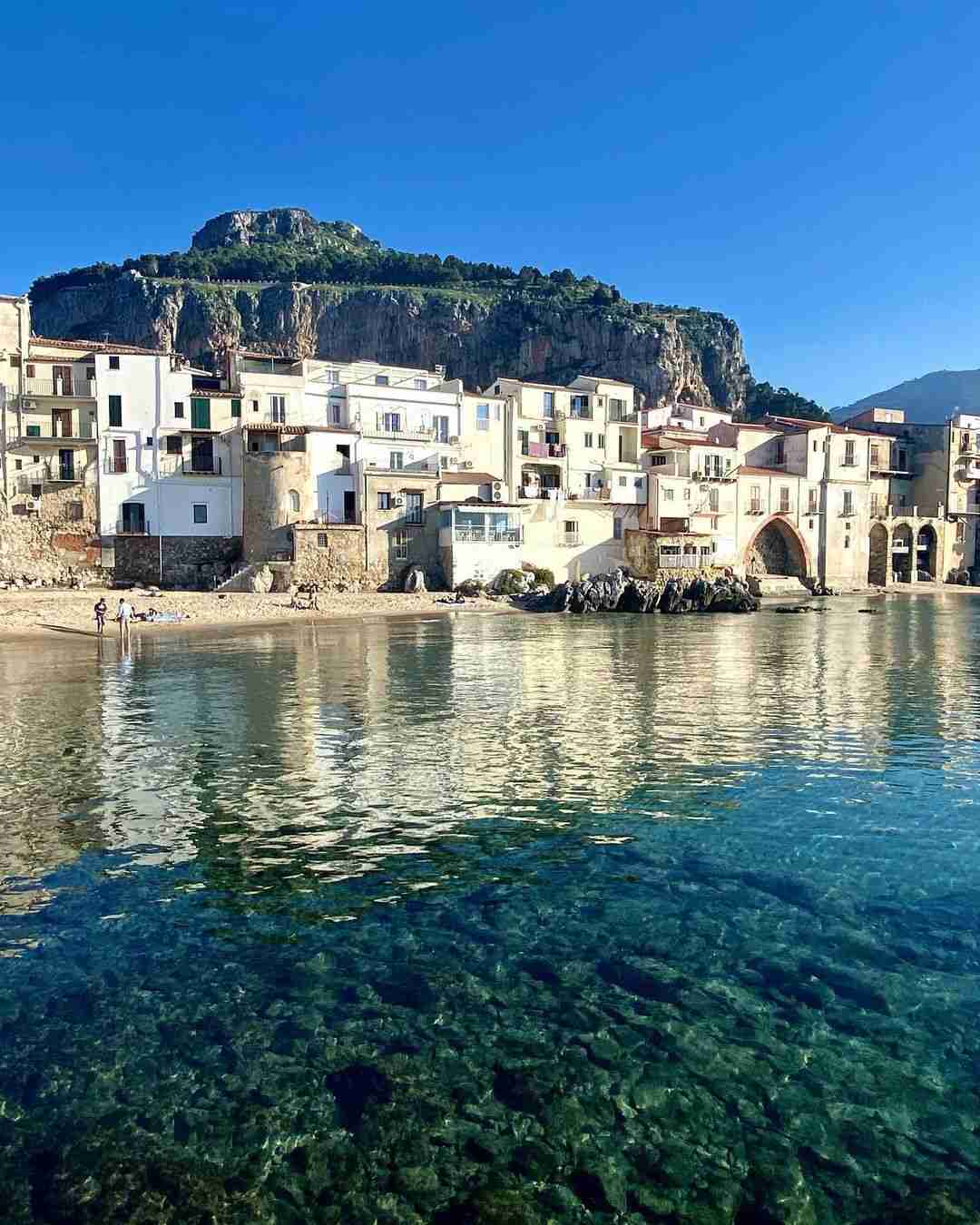
CEFALU WALKING TOUR
Cefalù Free walking tour with a local guide in english . Discover one of the most beautiful medieval villages in Italy .
Cefalù is one of the favorite destinations of Sicily and Palermo because it offers sea, mountains, culture, and splendid sunsets over the sea .
Come and discover the history , flavors and scents of this beautiful city with our Cefalù Walking Tour. Book now!
When: Every week Language: English/Italiano Duration: 2 hours
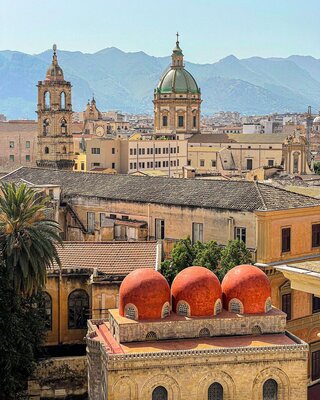
Arab-Norman Walking Tour
Discover why these sights have become World Heritage by UNESCO . Enjoy a walking tour full of the stories that once made Palermo the most important city of the Mediterranean.
When: Every week Language: English/Spanish/Italian Duration: 3 hours
Frequently Asked Questions
Can you walk around palermo.
Of course Palermo is a walkable city. We offer the best Free Walking Tours in Palermo, Sicily! Explore the city like never before with our knowledgeable and friendly guides. Discover the rich history and culture of Palermo on our Arab-Norman Walking Tour and admire the stunning architecture of the Cathedral of Monreale . And for those looking for something a little different, we also offer an alternative Free Walking Tour that takes you off the beaten path. Join us for an unforgettable experience in one of Italy’s most beautiful cities!
What is a free walking tour?
Free tours differ from regular tours in that there is no fixed price for taking the tour, nor a mandatory fee to be paid, regardless of the quality of the tour. Instead, you are given the freedom to tip your guide according to your own discretion at the end of the tour.
When you tip your guide at the end of the tour, it is important to keep in mind that they are a professional who earns their living through their work . By rewarding them for their services, you acknowledge their expertise and hard work, and ensure that they can continue to provide exceptional tours to future visitors. The term “free” still stands for the absence of a fixed fee, but tipping is an important way to show your appreciation for the guide’s efforts .
In conclusion, the free tour concept is a win-win situation for both the traveler and the local guide . It allows everyone, irrespective of their budget, to have access to authentic local experiences. Free walking tours offer a thrilling alternative for discovering cities while also supporting enthusiastic local guides and regional tourism initiatives .
Do you offer other kind of tours in Palermo or other Cities in Sicily?
Currently, we offer the tours displayed on our homepage. If you are interested in exploring different itinerary options , don’t hesitate to reach out to us via WhatsApp. Simply click on this link to get in touch .
What is the most touristic city in Sicily?
While Taormina and Syracuse are certainly popular tourist destinations in Sicily, Palermo is often considered the cultural and historical heart of the island. With its rich history, vibrant markets, stunning architecture, and diverse culinary scene, Palermo offers visitors a unique and immersive experience . The city is home to numerous attractions such as the Norman Palace, the Cathedral of Palermo, and the Teatro Massimo.
Catania, on the other hand, is a bustling city with a lively nightlife and an impressive Baroque architecture , including the famous Cathedral of Saint Agatha. It is also an excellent base for exploring Mount Etna, Europe’s highest active volcano .
Overall, each of these cities has its own charm and unique appeal to tourists, but Palermo stands out as a must-visit destination in Sicily .
What can I explore in Palermo on my own if I can't find availability for the Free Walking Tour?
Palermo is brimming with sights you can explore independently. Some, like the Teatro Massimo, offer guided tours. Others, such as the Cappella Palatina and the Palazzo Reale, provide audio guides. We recommend checking out our blog to discover how to spend a day in Palermo.
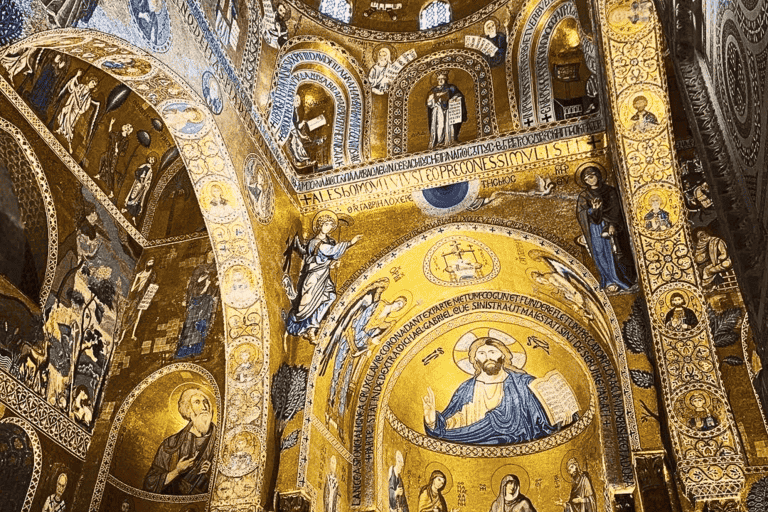
The Best of Palermo in One Day in 2024 – An Unforgettable Experience
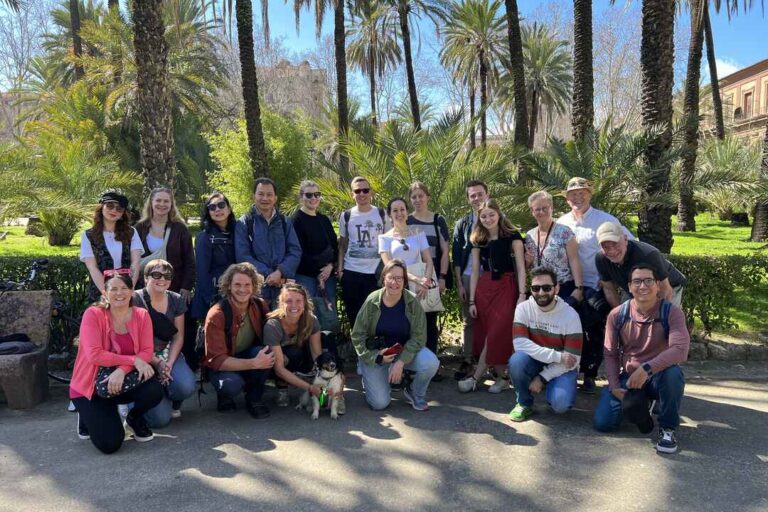
10 Things to do in Palermo in a day
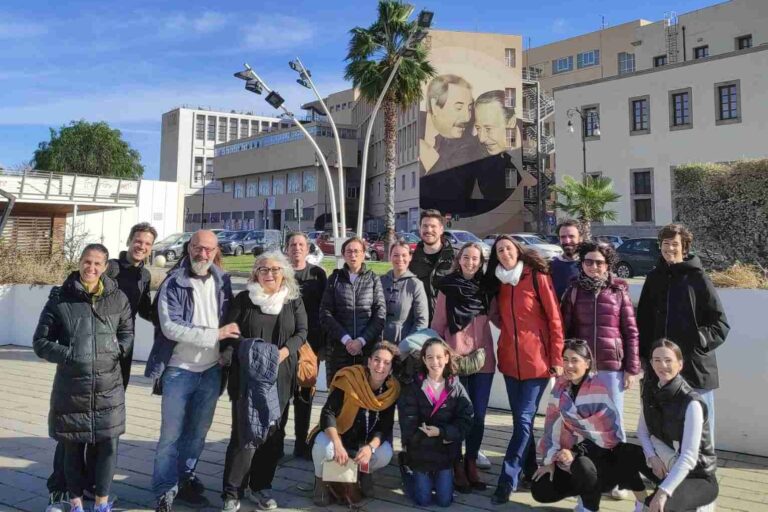
Alternative Palermo Free Walking Tour: Authentic & Local
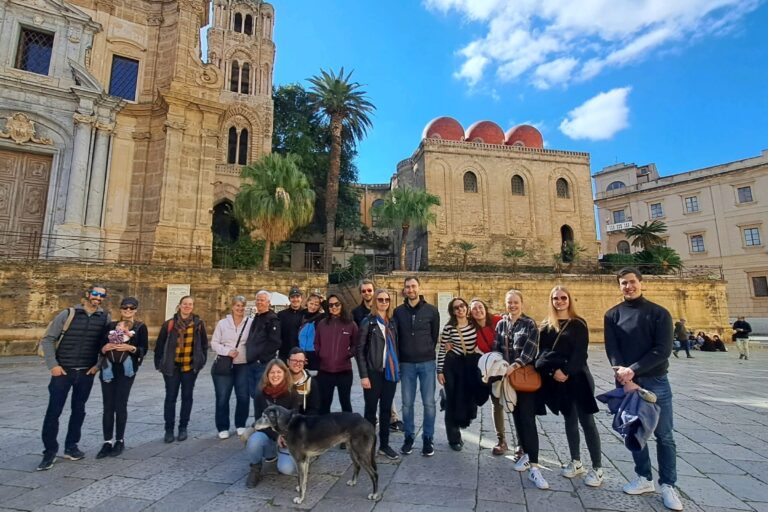
Palermo Free Walking Tour: 10 reasons to take a Free Tour by foot
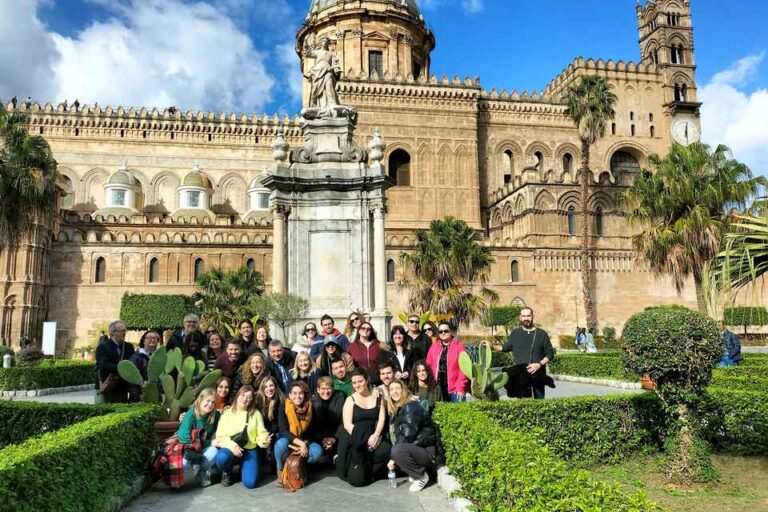
What to see in Palermo Sicily: The Cathedral
Looking for a tailor-made tour.
Would you like more flexibility? Change the route and the schedule, and get an exclusive
guide for your group.
Contact us! We will tailor a tour around your requirements
Why choose Kairós Tours
Authorised guides, responsible tourism, local experience.


Travel Guide
- Things to Do
- Best Hotels
- Things to See
- Best Restaurants
- Best Nightlife
- Planning a Trip
- Walking Tours
Walking Tours in Palermo
Old Palermo
Start : San Giovanni degli Eremiti.
Finish : Piazza Marina.
Time : 3 to 3 1/3 hours. (Interior visits, of course, will consume far more time.)
Best Time : Early morning or at opening time in the afternoon.
Worst Time : Mid-morning, when all the tour buses converge.
Begin your tour by the iron gates that protect the palm-shaded garden surrounding:
1. San Giovanni degli Eremiti
The best known of all the Arabo-Norman monuments of Palermo, San Giovanni degli Eremiti is at Via dei Benedettini. Five typically Arab domes reveal the origins of the Moorish craftsmen who constructed this monastery for Benedectine monks in 1132. It honors St. John of the Hermits. The church's tranquil, beautiful gardens are devoted to such species as the pomegranate and the jasmine. The gardens lead to the ruins of the original church that once stood here, a structure built in 581 for Pope Gregory the Great.
After a visit, walk north toward the sound of roaring traffic coming from the nearby Piazza del Pinta. En route to the piazza, you'll pass a wall niche dedicated to Maria Addolorata, which is usually embellished with plants and fresh flowers.
Cross to the opposite side of Piazza del Pinta. From here, you'll see the severely dignified stone archway pierced with formidable doors, leading to:
2. Palazzo dei Normanni
The chief attraction of Palermo, this mammoth palace and artistic treasure was constructed by the Arabs in the 11th century over the ruins of a Punic fort, in the highest part of the city. Over time it was expanded and turned into the royal residence of Roger II, the first Norman king. Much of the look of the present palace is from alterations it received from the 16th to the 17th century. The chief attraction inside is Cappella Palatina (Palatine Chapel), a magnificent example of the Arabo-Norman artistic genius.
Exit from the compound's stately entrance gate (the same one through which you entered), walk about 50 paces downhill, and then turn left onto Via del Bastione. You'll have trouble seeing the street sign at first.
From here, you'll skirt the Norman Palace's massive and sharply angled foundations. After two narrow and claustrophobic blocks, climb the first set of granite steps rising from Via del Bastione's left side. This will lead you into a verdant garden called:
3. Villa Bonanno
Imbued with the scent of jasmine and citrus trees, this public park separates the rear entrance of the Palazzo dei Normanni from the Duomo compound you'll be visiting soon. Dotting the garden are monuments and effigies erected in honor of Sicilian patriots. If it's a hot day, this is an idyllic place to cool off. Pop into the remains of the Roman villa to get an idea of daily life in Roman patrician times.
Walk through the garden, exiting at its opposite end, which will lead you to:
4. Palazzo Arcivescovile
Lying across the busy Via Bonello, a street of uncontrolled traffic, a portal is all that survives from the palace constructed here in 1460. The present structure is from the 18th century. It is also the Museo Diocesano ( Diocese Museum ), housing artifacts from the cathedral and other works of art from churches about to be demolished.
On the other side of Palazzo Arcivescovile on Via Bonello is the 16th-century Loggia dell'Incoronazione (Coronation Corridor), with ancient columns and capitals that were incorporated into the present structure. The kings of Sicily used to "display" themselves to their subjects here following a coronation. As a slight detour from this walking tour, head two blocks north after the Loggia to Via Gioeni to visit the Norman church of Santa Cristina La Vetere, one of the churches of the ancient Via Francigena, and which once housed the remains of the saint.
After viewing the palace, head east along the major artery, Corso Vittorio Emanuele. The sidewalk at this point becomes very narrow, barely passable, as cars roar by. The pavement will open within a short time onto a sweeping view of the:
At Piazza di Cattedrale, right off Corso Vittorio Emanuele, the duomo (cathedral) of Palermo, dedicated to Our Lady of the Assumption, was built on the site of an early Christian basilica, which was later turned into a mosque by Arab rulers. Although launched in the 12th century, the cathedral has seen many architects and much rebuilding over the centuries. The cathedral today is a hodgepodge of styles, its baroque cupola added in the late 18th century.
After a look or a visit, continue east along Corso Vittorio Emanuele on narrow sidewalks until you come to:
6. Biblioteca Centrale della Regione Siciliana
Once a Jesuit college called Collegio Massimo dei Gesuiti, this building is today the home of Palermo's main public library, providing shelter for more than half a million volumes and many ancient manuscripts, including several from the 15th and 16th centuries. A double arcaded courtyard is its architectural centerpiece. It is entered by the portal of the adjacent Chiesa di S. Maria della Grotta.
Continue to head east along Corso Vittorio Emanuele until you come to the intersection of Piazza Bologni, from here visit the:
7. Museo d'Arte Contemporanea
The spanking new contemporary art gallery is housed in the restored noble palace of Palazzo Riso and exhibits one of the finest art collections on the island, if not in all of Italy.
8. Take a Break -- Galleria Coffee Shop
While in the museum, stop at this Palazzo Riso coffee shop, which offers lots of local goodies and opens onto the magnificent Piazza Bologni. There's Wi-Fi here, in case you need to connect.
After a refueling stop, continue east for a short distance until you come to:
9. Chiesa San Giuseppe dei Teatini
Forming one of the Quattro Canti , this lavishly decorated church was built by the Theatine congregation. The interior has a dancing baroque spirit, although the facade, not completed until 1844, is along more severe neoclassical lines. The cupola of the church is adorned with majolica tiles. If you go inside (hours are Mon-Sat 8:45-11:15am and 5-7pm; Sun 8:30am-1pm), you'll find a two-aisle nave. Flanking it are towering columns resting under a frescoed ceiling, holding up walls covered with a marble polychrome decoration. The main altar is constructed of semiprecious gems, and the chapels are lavishly frescoed with stucco decoration. The church was designed by Giacomo Besio of Genoa (1612-45).
At this point of the walking tour, you are in the very heart of Old Palermo at the famous:
10. Quattro Canti (Four Corners)
Corso Vittorio Emanuele intersects with Via Maqueda, the latter street a famous piece of Palermitano civic planning, carved out of the surrounding neighborhood in the 16th century by the Spanish viceroy Maqueda. On each corner you'll find, on the lower tier, one of the allegories of the season; in the middle, one of the four Spanish Habsburg kings; and on top, the patron saint of each mandamento.
Directly east of this "crossroads" of Palermo lies:
11. Piazza Pretoria
This lovely square is Palermo's most famous. It's beautiful but controversial fountain, originally intended for a Tuscan villa, is adorned with nude statues and mythological monsters -- thus, it was called Fontana della Vergogna, or "Fountain of Shame," by outraged churchgoers. San Giuseppe dei Teatini is the church directly to the west; the eastern end of the square is flanked by Chiesa Santa Caterina (St. Catherine's Church). Climb the stairs of Santa Caterina to get a bird's eye view of the square. On the south axis stands Palazzo Pretorio, the City Hall. Note the plaque on the front of the building commemorating Garibaldi's 1860 triumph, ending the Bourbon reign in Sicily.
Now walk to the southern edge of the Piazza Pretoria and go through the narrow gap between the City Hall and the Chiesa Santa Caterina. A vista over the Piazza Bellini will open up before you. At its far end rise two of the most distinctive churches in Palermo, the first called:
12. Chiesa San Cataldo
Standing side by side with Chiesa della Martorana , this is one of two Norman churches built on the remains of a Roman wall. The church, with its rose-colored cupolas, was founded in 1154 by Maio da Bari, the emir of William I. After serving various purposes -- the church was turned into a post office in the 19th century -- San Cataldo today is the seat of the Knights of the Holy Sepulcher.
Next door to San Cataldo is:
13. Chiesa della Martorana
With its handsome Norman bell tower, this is the more intriguing of the two churches, thanks to its splendid mosaics. It is the loveliest Greek church remaining in Sicily. It was founded in 1143 by George of Antioch, called Roger II's "Emir of Emirs." Regrettably, the linear symmetry of the original Norman church is today covered by a baroque facade.
14. take a Break -- Pizzeria Bellini
Set directly at the base of the Church of San Cataldo, with a pleasant terrace that's shielded from the dust and congestion of the surrounding neighborhood by an evergreen hedge and latticework barrier, this is the kind of cafe where you almost fall into the chairs, then slug back a half liter of liquid refreshment. It doubles as a restaurant, in case you want a full meal, but most participants on this walking tour opt for gelato, a coffee, or a drink. Piazza Bellini 6; tel. 091-6165691 . Closed Mondays.
Retrace your steps along Via Maqueda north to Quattro Canti (Four Corners). Once there continue east along Corso Vittorio Emanuele on the street's right-hand side. Here the neighborhood grows increasingly battered, commercial, and decrepit. In about 4 minutes, turn right onto Via Alessandro Paternostro, a narrow street one short block after Vicolo Madonna del Cassaro. Walk uphill along Via Alessandro Paternostro through a commercial section of shops. After a brief walk, note the intricately carved Romanesque facade of the:
15. Chiesa San Francesco d'Assisi
This is one of the most outstanding churches in Palermo, thanks to its dignified simplicity and unusual combination of Romanesque and baroque detailing; you get the sense that it's still very much involved in the day-to-day life of this ancient parish. First constructed in the 13th century, it was destroyed by Frederick II after he was excommunicated by the pope. A new church was constructed and completed in 1277, although it's seen much alteration over the years. A 1943 Allied bombing didn't help matters, either.
From the square directly in front of the church (Piazza di San Francesco d'Assisi), head east on the narrow, unmarked street on the right-hand side of the church as you face it. Walk 1 1/2 short blocks until you reach:
16. Palazzo Mirto
This is your greatest opportunity to visit a palace from yesteryear and to see how a Sicilian noble family lived. Of the many other palaces in the neighborhood, most are closed to the public and still not restored. Palazzo Mirto miraculously remains as it was, with its original furnishings. It dates from the 18th century, having been built over earlier structures that went back to the 15th century.
After a visit, walk a few steps to the west into the broad 19th-century vistas of:
17. Piazza Marina
This is the largest square in Palermo. Its most significant architectural monument is Palazzo Chiaromonte Steri, constructed in 1307 by one of Sicily's most influential noble families. The palace was built in a Gothic style with Arabo-Norman influences. In the middle of Piazza Marina is the Giardino Garibaldi, a beautiful park around which there's no shortage of nightlife; it comes alive on the weekend with a flea market.
Note : This information was accurate when it was published, but can change without notice. Please be sure to confirm all rates and details directly with the companies in question before planning your trip.

- All Regions
- Australia & South Pacific
- Caribbean & Atlantic
- Central & South America
- Middle East & Africa
- North America
- Washington, D.C.
- San Francisco
- New York City
- Los Angeles
- Arts & Culture
- Beach & Water Sports
- Local Experiences
- Food & Drink
- Outdoor & Adventure
- National Parks
- Winter Sports
- Travelers with Disabilities
- Family & Kids
- All Slideshows
- Hotel Deals
- Car Rentals
- Flight Alerts
- Credit Cards & Loyalty Points
- Cruise News
- Entry Requirements & Customs
- Car, Bus, Rail News
- Money & Fees
- Health, Insurance, Security
- Packing & Luggage
- -Arthur Frommer Online
- -Passportable
- Road Trip Guides
- Alaska Made Easy
- Great Vacation Ideas in the U.S.A.
- Best of the Caribbean
- Best of Mexico
- Cruise Inspiration
- Best Places to Go 2024

Best things to do and see in Palermo
Palermo is a city located in the northwestern part of the region of Sicily , and it is also the province’s capital. It is a town that lies on the coast of the Mediterranean Sea in southern Italy and it abounds with great beauty in terms of art, architecture, culture, and gastronomy. This enchanting place to visit and enjoy is ideal to do a free tour and discover its most iconic landmarks. It is a port city that connects with other islands and other destinations in the Mediterranean (Naples, Valletta ...) and it is quite common to see cruise ships traveling in and out to other destinations.
Palermo can be visited in a few days, and there are several different free guided tours with routes that will take you through neighborhoods and points of interest such as Norman Palace, the Palermo Cathedral, the Massimo Theater, the Monreale Cathedral, the Quattro Canti, the Capuchins Catacombs, the Fontana Pretoria, the markets of Palermo (Capo, Ballaro), the International Puppet Museum, Corso Vittorio Emanuele, Zisa Castle, or Villa Palagonia. You can check out all of these interesting tourist destinations in Palermo by doing a guruwalk.
All free walking tours in Palermo have been rated with the opinions of other walkers who have already done the tour you are interested in. This way, you will be able to see what each one is like and what impressions other tourists have had about both the route and their guide. You can choose from tours that are available in the morning, afternoon, or in the evening. Normally, tourists who are thinking about doing a tour here also look at cities like Rome, Venice, Florence, Genoa or Milan.
Free walking tour near Palermo
Others cities to visit after palermo, where are you traveling to.
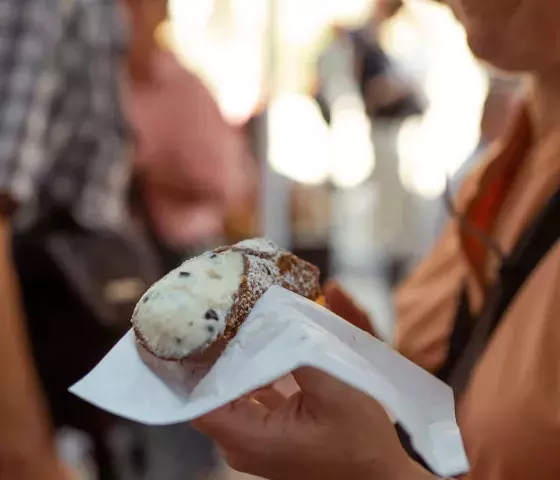
Small Group walking tour of Palermo UNESCO sites
Palermo is a fascinating city, boasting many cultural and historical treasures, even 8 UNESCO sites. By choosing this small group tour, you will have the opportunity to admire the best attractions , with a tasty local break!
About this tour:
Flexible reservation
Guaranteed Departure
Runaway success
- Explore the best of Palermo with an expert guide
- Dip yourself into the unique baroque and Norman architecture of Palermo
- Listen to the fascinating multicultural history of Palermo
- Enjoy a pleasant walk among the UNESCO sites of the city
- Taste one of the best “cannolo” in town
A small group tour of the UNESCO sites in the center of Palermo is a fascinating journey through the city's rich history and cultural heritage. The tour starts in the historic center of Palermo, where your local guide lead your group through the winding streets and alleyways to discover some of the city's most iconic landmarks.
A walking tour among Palermo UNESCO sites
As you explore these iconic landmarks, the local guide shares fascinating stories and insights into the city's history and culture. The tour offers an opportunity to learn about the influences that have shaped Sicilian architecture, art, and religion over the centuries, crossing the Baroque and Normann-Arab style architecture, admiring UNESCO attractions such as the Square of Shame , called by the locals Piazza Pretoria (Praetorian Square) . The huge fountain you can admire in this square is amazing, and it is also the reason of the square's name, due to the nudity of its statues. The Praetorian Palace is located in this plaza, too, and it hosts the Town Hall , which is usually open to the public so that you may spot the mayor of Palermo. This impressive building was built in the 14th century, and it was renovated in the 19th century.
Discover the main attractions of the city centre
Your cultural and historical experience will be enriched by admiring the exterior of the Royal Palace , which now hosts the Regional Parliament of Sicily. After the Normans conquered Sicily in 1072, the palace was the main residence of the kings and it is nowadays the most ancient Royal Palace in Europe. Through you will not enter inside the guide will explain the building's unique blend of architectural styles, including Norman, Arabic, and Baroque. Strolling across the city centre, the expert guide that will be with you will share fascinating stories and insights into the landmark s that have shaped Palermo's identity, helping you to understand the city's unique character and importance.
A tasty break with Sicilian cannolo
When visiting Palermo, we cannot ignore its religious significance, so that they will be part of our small group itinerary. You will have the opportunity to admire from the outside iconic spiritual cornerstones such as the Martorana Church , famous around the world for its beauty and majestic appearance. In fact, an Arabic traveller who visited the Martorana in 1184 called this Christian church "the most beautiful monument in the world", which perfectly resumes all we could have said about this site, that showcases the cultural and religious diversity of Sicily. One more unmissable stop will be the Cathedral of Palermo, a brilliant and unique example of stratification of styles, a grand cathedral that combines Norman, Gothic, and Baroque architectural styles , that houses the tombs of several prominent figures in Sicilian history. If you are wondering if this culture discovering and walking will make you hungry, don’t worry…we will have another substantial stop included for our small group: a tasty Sicilian cannolo.
This small group tour of the UNESCO sites in the center of Palerm o is a memorable and enriching experience that offers a deeper understanding of the city's unique cultural heritage.
Important Information
Please let us know in advance about any food allergy or dietary requirements.
Rain Policy
This tour runs on rain or shine.
Meeting Point
The meeting point is at our TOURIST HUB & COOKING SCHOOL in Palermo.
Starting from
price per person
You may also like
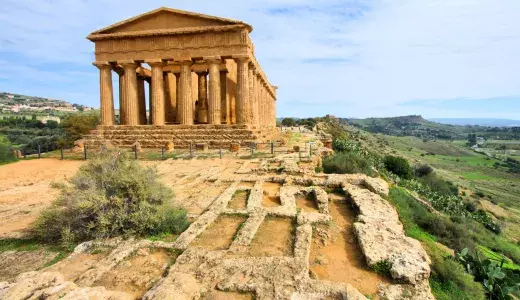
Embark on a private guided odyssey through the enchanting Agrigento Valley of the Temples, where the echoes of ancient myths and awe-inspiring architectural wonders beckon...
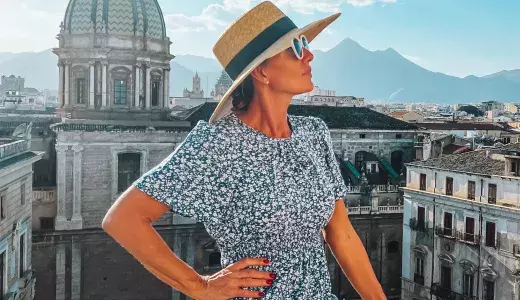
Embark on an enthralling a private journey through Palermo, where history and architectural wonders converge in a unique tour.
Nestled amidst the sun-kissed landscapes of Sicily, a mesmerizing adventure awaits you to unravel the captivating allure of the Agrigento Valley of the Temples. Get...
Experience the rich history and architectural wonders of Palermo on a fascinating tour that combines a Palermo Cathedral visit with a delightful walking exploration of...
All Destinations in Italy
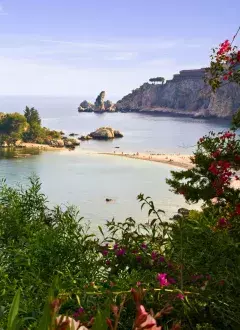
All the Experiences
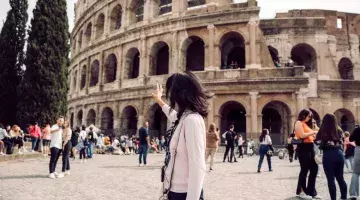

IMAGES
VIDEO
COMMENTS
Experience Palermo on foot. Book the perfect tour today! Full Refund Available up to 24 Hours Before Your Tour Date, Quick & Easy Purchase Process
Take a Walking Tour of Palermo and See the Famous Attractions. Top Rated Tours on Viator. Quick & Easy Purchase Process! Full Refund Available up to 24 Hours Before Your Tour Date
Free self-guided walking tours. In this article I'll list the four best free self-guided walking tours that helps you Experience the best of Palermo. Follow them and you will not have to wonder if you have missed something crucial. You really can't say that you've seen all Italy has to offer without making a stop in Sicily.
Self-Guided Palermo Walking Tour. The best way to explore the historic district of Palermo is on foot. This 5-kilometre walking route takes about 1.5 hours to walk without entering any of the buildings. Depending on the time spent at each stop, this walk could easily take a day. Follow our route from Massimo Theatre to the Church of San Cataldo ...
Self-Guided Walking Tours to Explore Palermo, Italy Follow these 3 expert-designed self-guided walking tours to explore Palermo, Italy on foot at your own pace. You can also create your own self-guided walk to visit the city attractions which interest you the most.
I created for you a self-guided walking itinerary that covers the main sights of Palermo. They offer everything from art and architecture to rooftop views and mummified bodies. A Palermo walking tour is a great way to immerse yourself in the cool, curious and sometimes peculiar world of the Sicilian capital. The itinerary gives you all the ...
Tour Duration: 1 Hour (s) Travel Distance: 2.6 Km or 1.6 Miles. view all. Self-guided walking tour: Palermo Introduction Walking Tour in Palermo, Italy. The detailed walk route map can be downloaded to your mobile device for turn-by-turn travel directions.
I created for you a self-guided walking itinerary that covers the main sights of Palermo. They offer everything from art and architecture to rooftop views and mummified bodies. A Palermo walking tour is a great way to immerse yourself in the cool, curious and sometimes peculiar world of the Sicilian capital. The itinerary gives you all the ...
Palermo's self-guided walking tour reveals a city steeped in history, where Norman, Arab, and Baroque influences seamlessly coexist. As you wander through the Royal Palace, charming churches, and historic piazzas, you'll witness the layers of Palermo's past and its vibrant present. This exploration is not just a walk; it's an immersive ...
Electrical Mountain Bike Daily Rental ATALA eBike B-Cross CX 24 hours Discover Palermo by your own with one of our Atala…. 10. Palermo Scavenger Hunt and Best Landmarks Self-Guided Tour. Use clues at each attraction to find your next destination and challenge yourself to use logic, imagination, observation….
Wander Quattro Canti. One of the most famous intersections of Europe, the 'four corners of Palermo' was built at the beginning of the 17th century. Quattro Canti is also one of the finest examples of grand city planning in Europe and a glorious place to start your Palermo one day itinerary. This Baroque plaza, officially called Piazza ...
4. Palermo No Mafia walking tour: discover the Anti-mafia culture in Sicily. 494. Volunteer Tours. 3 hours. Palermo, with its mix of high culture, street drama, and time-worn elegance, is a charming city for a walking tour. This…. Free cancellation. Recommended by 97% of travelers.
Free Walking Tour Palermo Join the Free Welcome Tour of Palermo! Get to know the city led by a local tour guide! Join our free walking tour of Palermo, follow your Freely guide through the shady backstreets and the bright elegant squares of the city center, learn about stories and facts that make this city so unique. Twenty-six centuries of glorious history and fine culture impressed on every ...
Quick Overview of Your Palermo Walking Tour: Kalsa District. MORNING. Start your day off with a hearty lunch, because you have some incredible sites to visit before you get to lunchtime. In the morning, you are going to see a Palazzo Abatellis collection, the Gancia Church, Spasimo Church and the uniqueness of the Magione Church. LUNCH.
Of course Palermo is a walkable city. We offer the best Free Walking Tours in Palermo, Sicily! Explore the city like never before with our knowledgeable and friendly guides. Discover the rich history and culture of Palermo on our Arab-Norman Walking Tour and admire the stunning architecture of the Cathedral of Monreale.And for those looking for something a little different, we also offer an ...
Walking Tours in Palermo. Old Palermo. Start: San Giovanni degli Eremiti. Finish: Piazza Marina. Time: 3 to 3 1/3 hours. (Interior visits, of course, will consume far more time.) Best Time: Early morning or at opening time in the afternoon. Worst Time: Mid-morning, when all the tour buses converge. Begin your tour by the iron gates that protect ...
The best guruwalks in Palermo (7 / 10) Orientation Walk - Free Tour with a Laidback Guide. 425 ratings. 4.9. Duration: 2h. Starts at: 10:00 and 18:00. fri.
Likely to sell out. From $37.17 per person. Reserve now & pay later to book your spot and pay nothing today. Give this as a gift. Discover the UNESCO World Heritage Sites of Palermo on a guided walking tour. Stroll past the Palatine Chapel and the Palazzo Pretorio as you enter the Piazza Pretoria and stand inside the Cathedral.
4. Palermo: NO Mafia Walking Tour. Discover the top sights in Palermo from a unique angle on a guided walking tour. Every stop is a chance to pause for reflection on the realities of the Mafia and consider the civic movement against Mafioso power. Meet your guide and begin your mafia-themed adventure through the streets of Palermo.
The Capuchin Catacombs and Castello della Zisa (next up on this Palermo itinerary) are only 10 minutes apart on foot. Start at the Catacombs, which tend to close earlier in the afternoon. The macabre yet fascinating place on the site of the Convent of the Capuchin Friars owes its origin to pure chance.
Highlights. Explore the best of Palermo with an expert guide. Dip yourself into the unique baroque and Norman architecture of Palermo. Listen to the fascinating multicultural history of Palermo. Enjoy a pleasant walk among the UNESCO sites of the city. Taste one of the best "cannolo" in town. A small group tour of the UNESCO sites in the ...
As luck would have it, stumbling upon the hidden gems of Palermo is just a step away with the private 3-hour walking tour. With a blend of history, culture, and gastronomy, this expertly guided journey promises a tantalizing glimpse into the soul of this vibrant Italian city. From the majestic Teatro Massimo to the bustling markets, each corner holds a story waiting to unfold.